


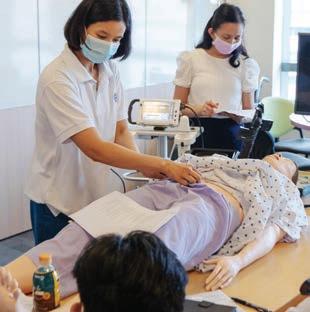

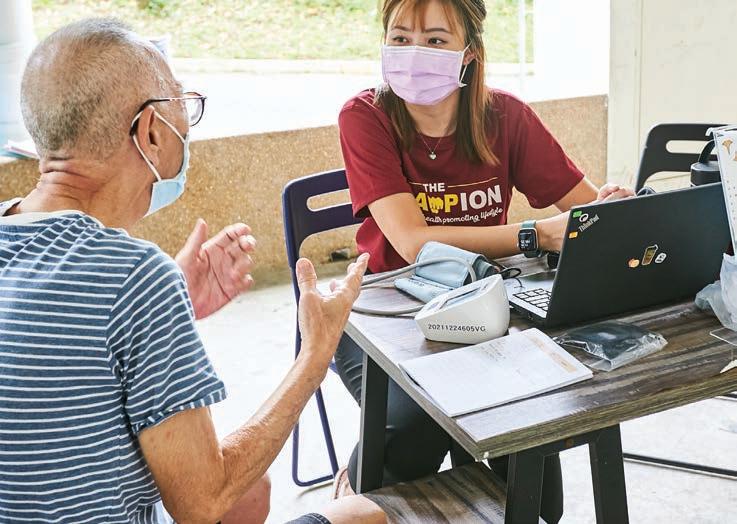
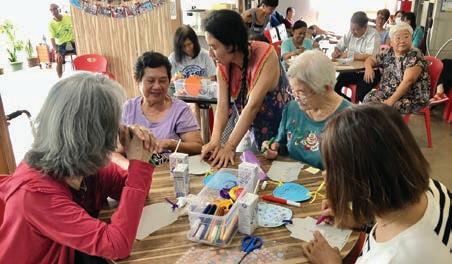






MCI (P) 020/07/2023 ISSUE 3 : JUL–SEP 2023 5 THINGS ABOUT ORTHODONTICS 26 HEALTHY CAN BE TASTY, TOO 23 BATTLING MICROSCOPIC FOES 20 CARING FROM THE GROUND UP see page36
aha
12 COVER STORY Caring from the Ground Up Working with partners — be they social work groups, community activists, or primary care doctors — to form a community of carers for the long-term health of residents in the north

WHERE YOU ARE
23 LIVE WELL Healthy Can Be Tasty, Too
Chefs from Yishun Health’s Food Services team are passionate about feeding patients nutritious yet flavourful meals

part of our series on how we are building our House of Care — our framework for growing our participatory care and community services ecosystems — we focus on how our partners in the community contribute to our efforts. They play an active role in providing resources, and creating support systems that activate, enable and empower the greater community. Forming a network of care on the ground, they support us in creating a population-centred approach towards health and care.
In

2 | ontents 5 WHAT’S UP Community events, outreach efforts, and more 10 YH IN THE NEWS A roundup of Yishun Health appearances in the media 18 Q&A Health and wellness questions asked and answered!
EVERYDAY HEROES Battling Microscopic Foes Senior Nurse Clinician Foo Meow Ling’s role as an infection control nurse was pivotal in protecting patients and staff during the recent pandemic
3 of 3
20
Part
the third
23
5 THINGS ABOUT…
Orthodontics
Tips to align your teeth and jaw for better oral health and a winning smile
28 SPOTLIGHT
Driving Campus Safety for Patient Safety
Meet the operational teams working behind the scenes to ensure the safety of our patients and staff
32 DAILY DOSE
Make Your Doc the First Stop
Introducing the GPFirst programme
34 MAKAN TIME
Cajun Roast Chicken
This tasty meal is all the more flavoursome with the use of a spice rub

36 NURSES’ DAY 2023
Celebrating the achievements of Yishun Health nurses, the backbone of our healthcare system
Scan here to subscribe to aha online for regular updates and stories from Yishun Health!
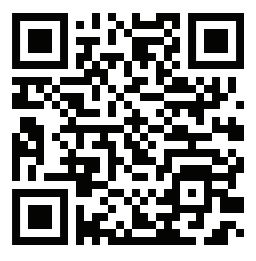
PUBLISHER
Yishun Health is a network of medical institutions and health facilities in the north of Singapore, under the National Healthcare Group. It comprises Khoo Teck Puat Hospital, Yishun Community Hospital, and community extensions such as Admiralty Medical Centre and Wellness Kampung.
EDITORIAL TEAM
Nur Amalina
Hannah Wong
Jack Lau
Sabrina Ng
Sharon Ng
Albert Foo
EDITORIAL COMMITTEE
The editorial committee — made up of clinical, nursing, allied health, population health & community transformation, and administrative heads of department — advises aha’s direction.
A/Prof Tan Kok Yang
Bastari Irwan
Caroline Tan
Fatimah Moideen Kutty
Shirley Heng
Teresa Foong
www.ktph.com.sg/ about-us/media/publications
aha@ktph.com.sg
PUBLISHING AGENT
THINKFARM PTE LTD
www.thinkfarm.sg
MANAGING DIRECTOR Christopher Tay
HEAD, EDITORIAL
Chua Kim Beng
CONTRIBUTING EDITOR
Sheralyn Tay
CONTENT CREATOR
Jason Woo
HEAD, CREATIVE Lee Lily DESIGNER
Ruey Yong
HEAD, CLIENT RELATIONSHIP
Why aha?
The name aha holds much significance for us at Yishun Health. In part, it is a nod to our history; it also stands for ‘Advocates for Health in Action’. Through these pages, we hope to empower you to take charge of your own health and discover those ‘aha!’ moments that lead to a healthier, happier you.
Jessie Kek
CONTRIBUTORS
Justin Loh, Vivienne Looi
aha is the official quarterly publication of Khoo Teck Puat Hospital (Co. Reg. No. 200717564H) and is produced by ThinkFarm Pte Ltd. All rights to this publication are reserved and no part may be reproduced without the expressed written consent of the publishers. While every effort has been made to ensure that the information in this newsletter is accurate and up to date, the editorial team will not be responsible for errors due to information received. Opinions expressed are that of the writers and do not necessarily represent the views and opinions of the publishers. Printed by Mainland Press Pte Ltd. MCI (P) 020/07/2023

| 3
26
34

Coming together collectively for a healthier population
On 14 April, Yishun Health took part in the National Healthcare Group’s (NHG) population health seminar, POPCollect 2023. The event was an opportunity to showcase the range of community-led and -based initiatives, including our Wellness Kampung activities, and partnerships with services and organisations on the ground.
One poster, titled ‘Collaborations between Blossom
Seeds, Frontier Medical Associates (Canberra) and Yishun Health to increase accessibility to community resources’, won the People’s Choice Award.
Such partnerships will become increasingly relevant as Singapore launches its preventive care strategy, Healthier SG, which will bolster the links between residents and their respective primary care providers. The focus will be on prevention, screening and lifestyle
modifications — areas where community-based health resources will come into play.
To this end, Yishun Health and its partners will have an important role in supporting NHG’s Community of Care, a network of localised care providers that will develop and organise preventive health programmes for residents (read more about this in our Cover Story on page 12).
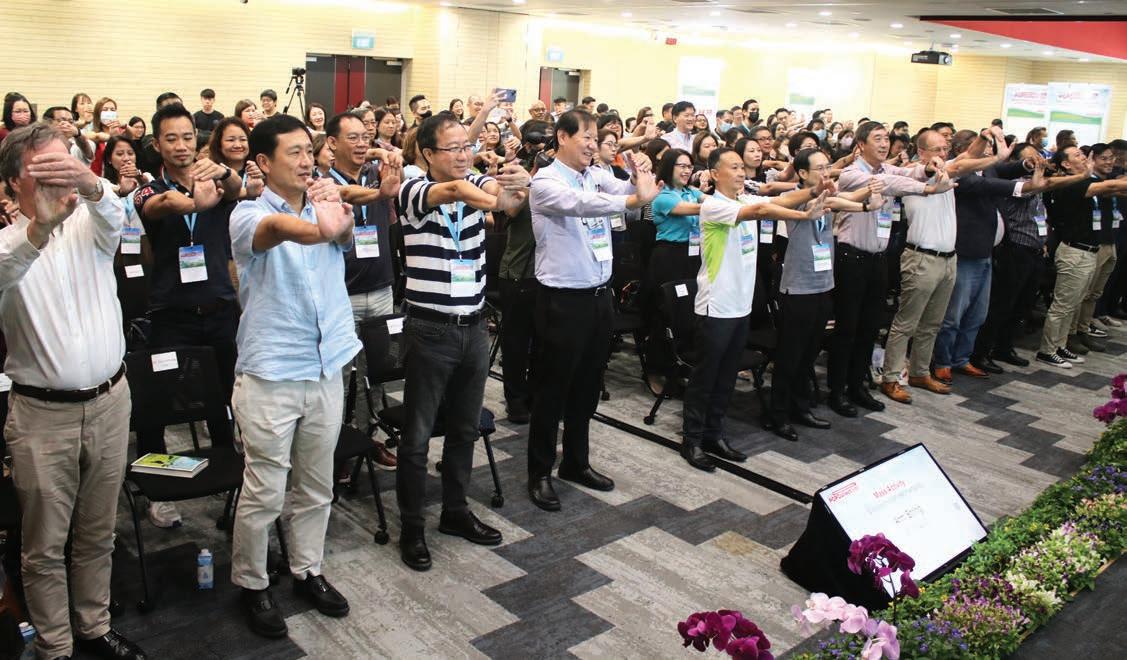
| 5
Health Minister Ong Ye Kung (second from left, in light blue) joining an exercise session at the opening ceremony of the NHG Population Health Collective annual workplan seminar. Residents in the north and central regions are set to benefit from NHG’s Health Kampung initiative
hat’s Up
Photo: NHG
Get happy the old school way!
To celebrate International Day of Happiness, which falls on 20 March, the Psychology Service team took people down memory lane and spread positive energy on campus. Themed ‘Blast from the Past’, staff as well as members of the public had the opportunity to learn how better understanding of their past can improve their well-being.
Nostalgia and reminiscing on life is an opportunity for gratitude, and gives us a sense of accomplishment and of self. Doing so allows us to forge a deeper connection with ourselves, giving us insight into how we can live our lives happily and meaningfully. To capture some of those feelings, the team set up a photobooth, offered old school snacks like kacang puteh, and set out retro childhood games such as five stones and pick-up sticks.
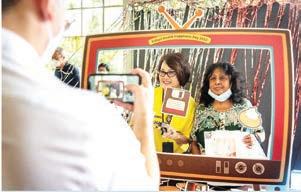
Water wonderful walk!
From channeling our rainwater to Yishun Pond to using a recycled irrigation system, water conservation and sustainability have long been founding principles at
Yishun Health. At this year’s World Water Day, we marked the occasion with a brisk morning walk on 18 March. Some 50 of our staff and their families took an energising stroll from
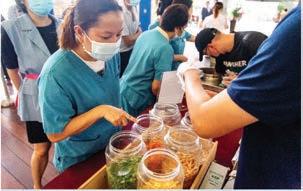
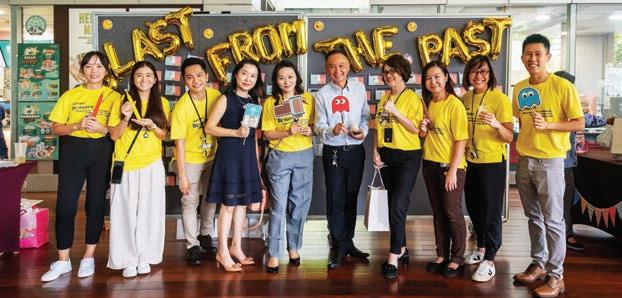
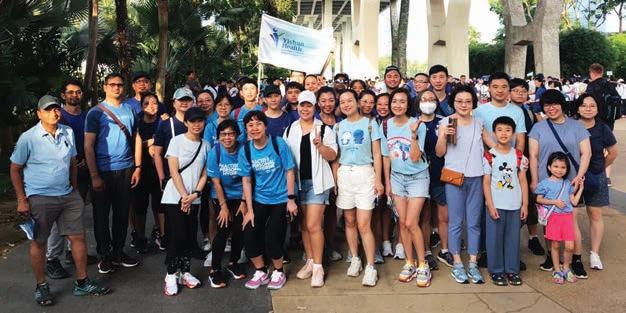
Gardens by the Bay to the Marina Barrage. As per our annual tradition, the KTPH and YCH buildings were lit in blue to commemorate Singapore World Water Day 2023.
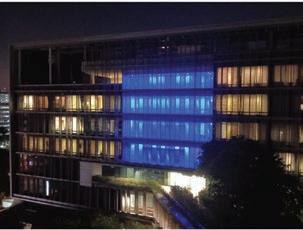
6 | hat’s Up
Everyone enjoyed picking and choosing their favourites from the assortment of snacks at the kacang puteh booth!
At the photo booth, participants enthusiastically posed with traditional items from days gone by
The KTPH and YCH buildings lit up in blue to commemorate Singapore World Water Day 2023!
Adding spice to your life
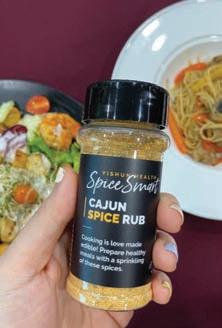
Yishun Health’s LifeWorks! Committee and Human Resource Wellness team collaborated with the talented chefs from Food Services on a fun initiative titled SpiceSmart to promote mental wellness through healthy cooking.

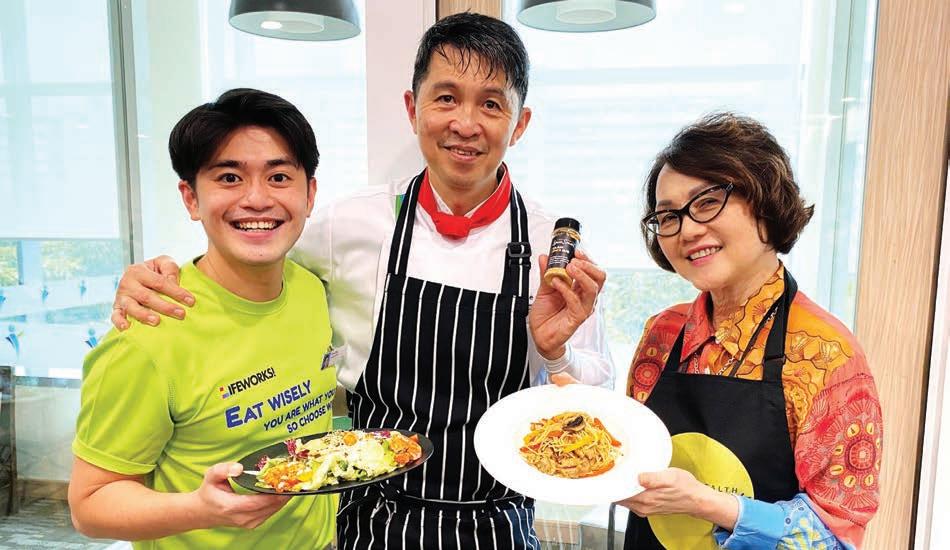
Executive Chef Nge Aik Tee and Chef De Partie Ali Saikh Arsed created two delicious all-in-one spice blends — Cajun and Curry — both of which contain low-sodium salt. In March and April 2023, the blends were used in four cooking demonstrations, in which Chef Nge and Chef Ali were supported by Yishun Health dietitians and Senior Management to whip up a variety of dishes. Staff were also encouraged to come up with their own unique recipes to share with colleagues.
This SpiceSmart initiative created awareness for our staff on how cooking can be a mindful activity
that engages the sense of smell, sight, touch and taste. By taking time to cook for ourselves and our loved ones, we also practise love
for ourselves and others.
Why not make your own Cajun Roast Chicken at home today? Turn to page 34 for the recipe!
| 7
Ryan Ong, Senior Dietitian (left), hosted the first SpiceSmart cooking demonstration conducted by Executive Chef Nge Aik Tee (centre) and Chief Human Resource Officer Cynthia Lee (right)!
CHRO Cynthia assisted Executive Chef Nge at the first cooking demo, exclaiming, “If he asks me to fry, I will try!” The two dishes that they whipped up together were Spaghetti with Cajun Chicken, and Cajun Prawns & Oyster Mushrooms with Honey Lemon Dressing
Supporting breast cancer patients through their treatment journey
Khoo Teck Puat Hospital and the Breast Cancer Foundation (BCF) inked a Memorandum of Understanding on 26 April for a centre that will offer comprehensive support for breast cancer patients. Slated to open in late May 2023, this will be the first Breast Cancer Support Centre in Singapore.
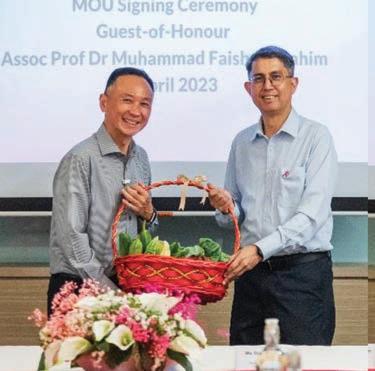
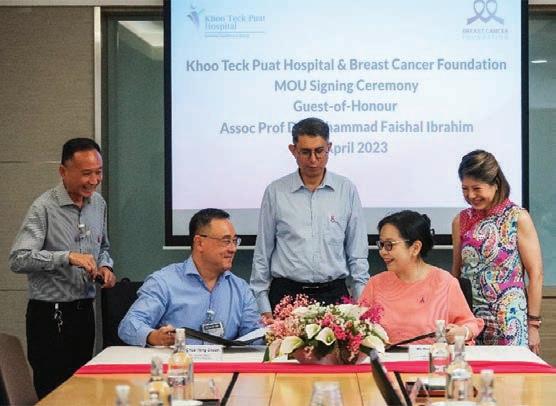
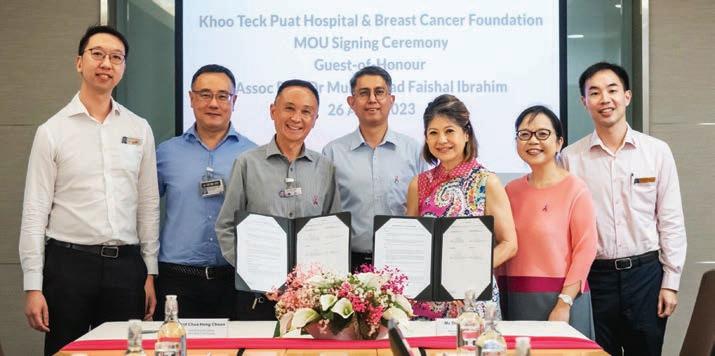
At the Centre, trained BCF staff and volunteer befrienders will offer complimentary psychosocial services and advice to people who are newly diagnosed and those who are undergoing treatment. Patients can tap on resources and aid such as financial counselling and form filling. BCF will also conduct activities for patients.
The Centre, said Yishun Health CEO, Prof Chua Hong Choon, will “complement our medical services and elevate the care journey for breast cancer
8 | hat’s Up
patients”. The signing was graced by Assoc Prof Muhammad Faishal Ibrahim, Minister of State, Home
(Left to right) Dr Clement Chia, Head of Breast Surgery Service, KTPH; A/Prof Tan Kok Yang, Dy CMB, KTPH; Prof Chua Hong Choon, CEO, KTPH; Guest-of-Honour Assoc Prof Muhammad Faishal Ibrahim; Ms Staphnie Tang, President, BCF; Ms Susan Leen, General Manager, BCF; and Dr Jerry Goo, HOD, General Surgery, KTPH
The signatories sharing a light hearted moment during the signing of the MOU
Prof Chua presented a basket of fresh vegetables picked from our rooftop garden to our Guest of Honour as a token of appreciation
Affairs and National Development, as well as Member of Parliament for Nee Soon GRC.
World No Tobacco Day
World Tobacco Day is observed on 31 May around the globe to encourage smokers to abstain from tobacco consumption for a 24-hour period. This year, Yishun Health marked the event with a two-day exhibition on 25 and 26 May. It was themed ‘We need food, not tobacco’ and was organised by the National Healthcare Group in collaboration with Yishun Health and Woodlands Health.
During the showcase, pharmacists engaged staff and the public, sharing advice and resources on how to quit smoking or vaping. They also talked about smoking cessation programmes and ways to cope with withdrawal while quitting.
To engage people in a more interactive way, there was an online quiz with goodie bags to be won. Staff and members of the public also wrote words of encouragement to people who were trying to quit smoking or vaping.


Celebrating Hari Raya with a colourful fusion of tradition and modernity
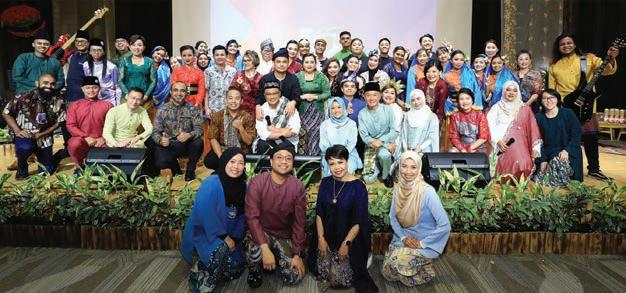
On 5 May, Yishun Health
celebrated Hari Raya with a cultural showcase that fused traditional and modern elements. Themed ‘raya | remix – fusion of colours’, the event was a fresh mix of song, dance, drama, poetry and martial arts that featured the diverse and impressive talents of our colleagues.
The enthralling performances combined Javanese and Peranakan influences, and even featured Silat moves. There were also folk songs — some originating from several centuries ago — reinterpreted with modern instruments and traditional dance forms fused with hip-hop moves.
The event was also a chance to gift more than $6,000 in proceeds from our Gotong Royong Charity Bazaar to the Muslim Trust Fund
Association. The Association’s Executive Director, Dr Abdul Qader Al-aidaroos, was present to receive the donation.
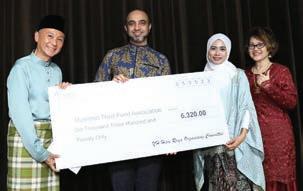
| 9
Smoking Cessation Lead Claudine Oh, Assistant Director, Operations, KTPH (right), presenting a certificate of appreciation to Senior Clinical Pharmacist Hobart Ng Tsai for his contribution and dedication as a smoking cessation counsellor
The event was graced by Guest-of-Honour Senior Parliamentary Secretary Mdm Rahayu Mahzam (centre, in light blue).
…on The Straits Times
Senior Nurse Managers Cherie Koh and Ng Siok Qi performed not one, but two, life-saving procedures during a trip to San Francisco for a leadership course. They answered their first call of duty while awaiting to depart from Changi Airport. A passenger, covered in blood, was lying motionless on the ground. Without delay, they administered cardiopulmonary resuscitation and used an automated external defibrillator on the passenger before a medical team arrived. The second incident took place on their return flight when they responded to a request for medical personnel. This time, a man was found slumped over in the restroom. With help from an airline steward, the nurses transferred the passenger to his seat and monitored his vital signs. The flight was diverted so the affected passenger could receive medical attention.

Scan the QR code to read the full story in The Straits Times .
…on KTPH Instagram
In the second quarter of 2023, a new trend took social media by storm when content creators began mimicking the cinematic style of American filmmaker Wes Anderson.
Anderson’s films are best known for their eccentricity and unique visual style, such as a saturated colour palette, quick cuts, and symmetrical framing. Joining the fun, we captured scenes from around the hospital and replicated Anderson’s aesthetics as best as we could!
Scan the QR code to see Khoo Teck Puat Hospital through the lens of a Wes Anderson flick.
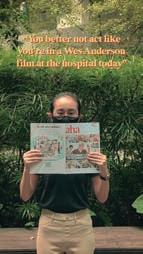
...on KTPH Facebook
…on Lianhe Zaobao
The Singapore Cancer Registry found that advanced breast cancer made up 27% of all diagnosed cases in Singapore from 2013 to 2018. And despite the launch of the national breast cancer screening programme in 2002, the screening rate for breast cancer until 2019 was only 38.7%. Dr Clement Chia, a breast surgeon at Khoo Teck Puat Hospital, wrote a commentary on the top three reasons why advanced breast cancer patients are hesitant to seek treatment early. He also shared his thoughts on the importance of breast cancer screening and early detection, and what can be done to promote breast cancer awareness in Singapore.
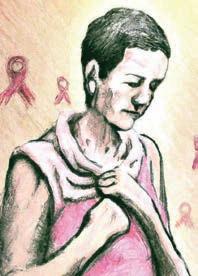
Scan the QR code to read his full commentary in Lianhe Zaobao .

Podiatrists are often mistaken as a ‘missy for cleaning wounds’ or ‘highly paid pedicurists’. In reality, podiatrists are trained to assess, diagnose and treat abnormal conditions of the feet and lower limbs. Besides diagnosing and treating foot and ankle injuries, they also manage chronic conditions such as arthritis and diabetes. In celebration of Singapore Podiatry Day this year, we followed Senior Podiatrist Wong Wan Mun as she took us through her busy day at the clinic.

Ever wondered what goes on in the life of a podiatrist? Scan the QR code to watch.
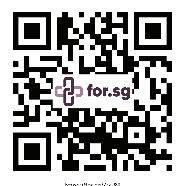

f @khooteckpuathospital

10 | in the News YH
us on Facebook & Instagram!
Follow
Photo: Ong Wee Jin / ST
Photo: Dr Clement Chia
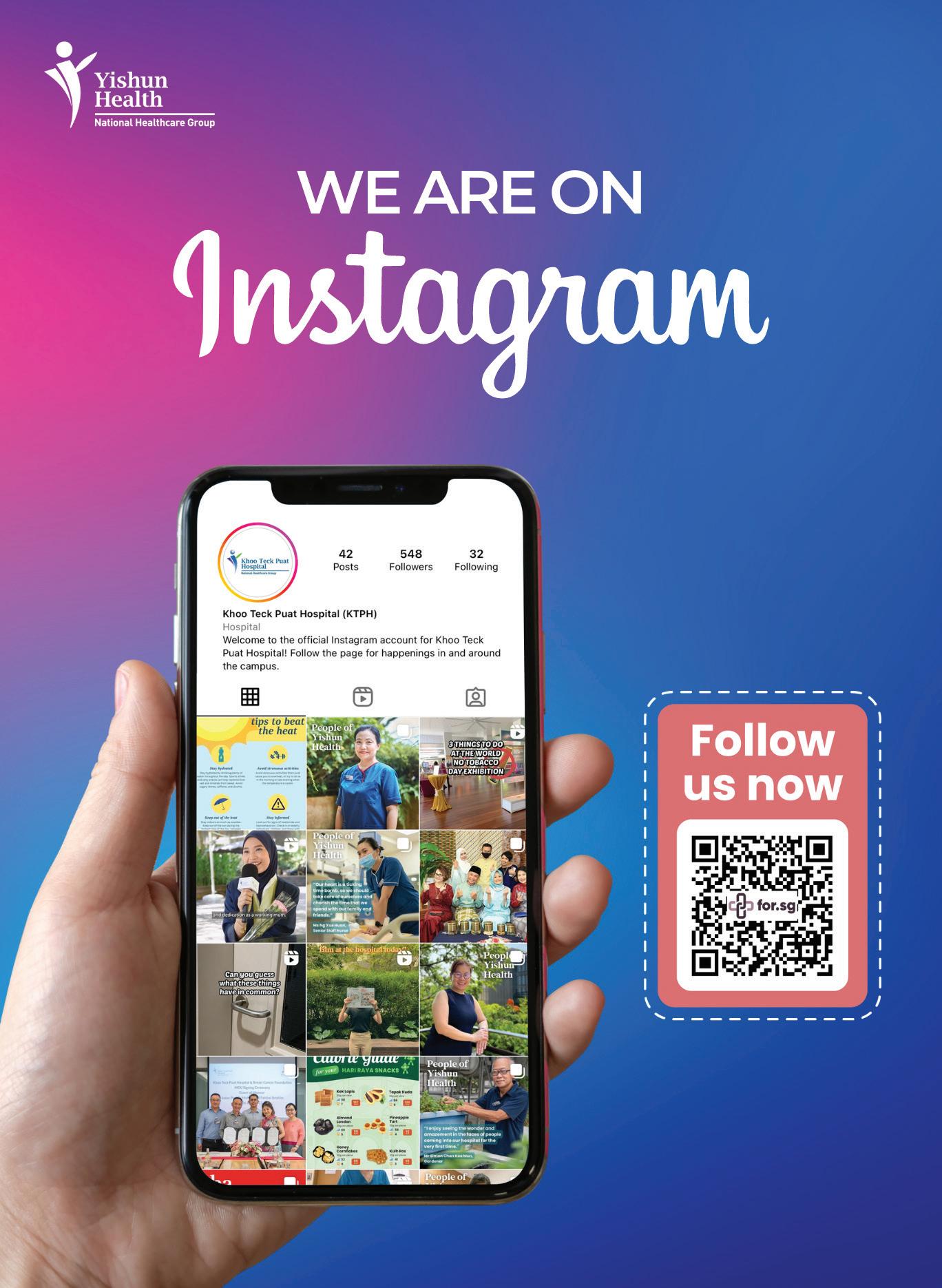
CARING FROM THE
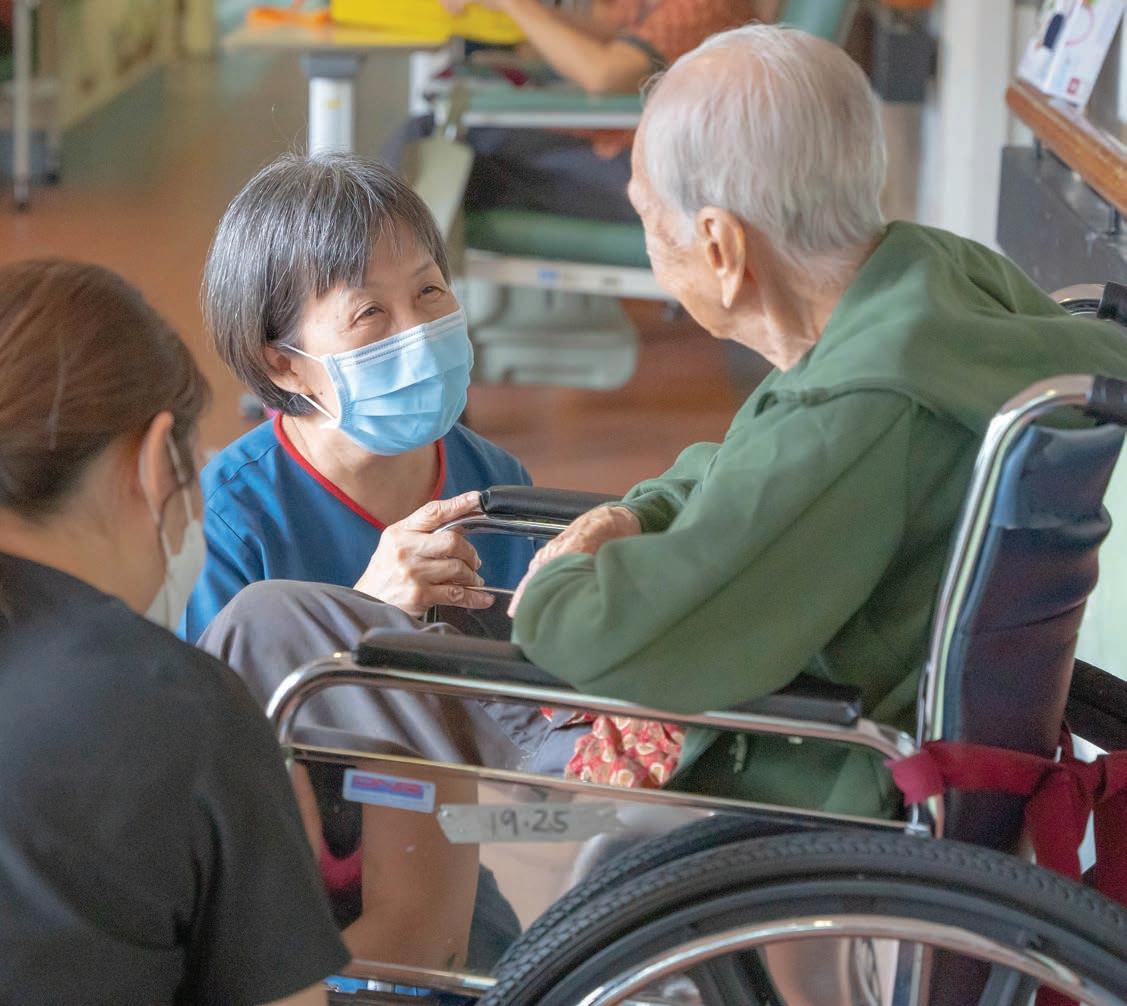
12 |
Cover Story
GROUND UP
Networks of resident-led health creation already occur outside the walls of our hospitals. In the third and final part of this series, we see how supplementary care and support services, when needed, are rendered close to home by providers situated in our community. They form the Community Services
Ecosystem that supports individuals with long-term conditions and/ or functional decline, and their caregivers, to live well in spite of their increasingly complex conditions and plan ahead.

Every Thursday morning, about 10–12 residents make their way to the Community Health Post (CHP) at TOUCH Active Ageing (Yishun), an Active Ageing Centre at the Yishun Spring neighbourhood. There, it is a flurry of activities — some residents are learning to measure their blood pressure, while others are engaged in discussions on their health. A variety of conversations can be heard, from “How’s my blood pressure?” to “What exercises should I do?”
This scene is replicated at 19 CHPs located across Yishun and Sembawang. At the CHPs, residents can connect with Yishun
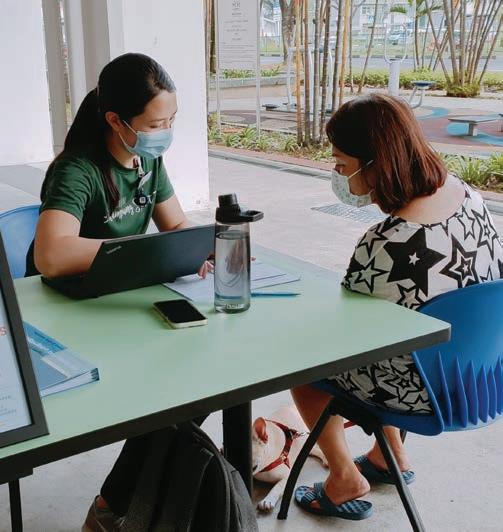
Health’s regional team of nurses and connectors to access health information, chronic disease management advice, health action coaching, and links to other community resources. This builds the capability and capacity of residents to create and take charge of their health plans. The majority of CHPs are co-located at the premises of partner agencies, thus increasing access points to healthcare without the need for appointments. Some examples include Community Clubs and Residents’ Networks set up by the People’s Association, social care partners, and Active Ageing Centres.

| 13 WITH YOU
ARE PART 3 OF 3
WHERE YOU
A resident registering at a Community Health Post
Thus, it is easier and more convenient to access care services programmes offered by such partners and other forms of support, resources and connections that are meaningful and relevant.

“Many of the organisations we have partnered play an active role in enabling the community around them,” says Dr Wong Sweet Fun, Clinical Director, Population Health & Community Transformation, Yishun Health. “They are an added pair of eyes and ears, looking out for the needs of residents living in the community. Together, we form a stronger network that cares for residents — a Community of Carers.”
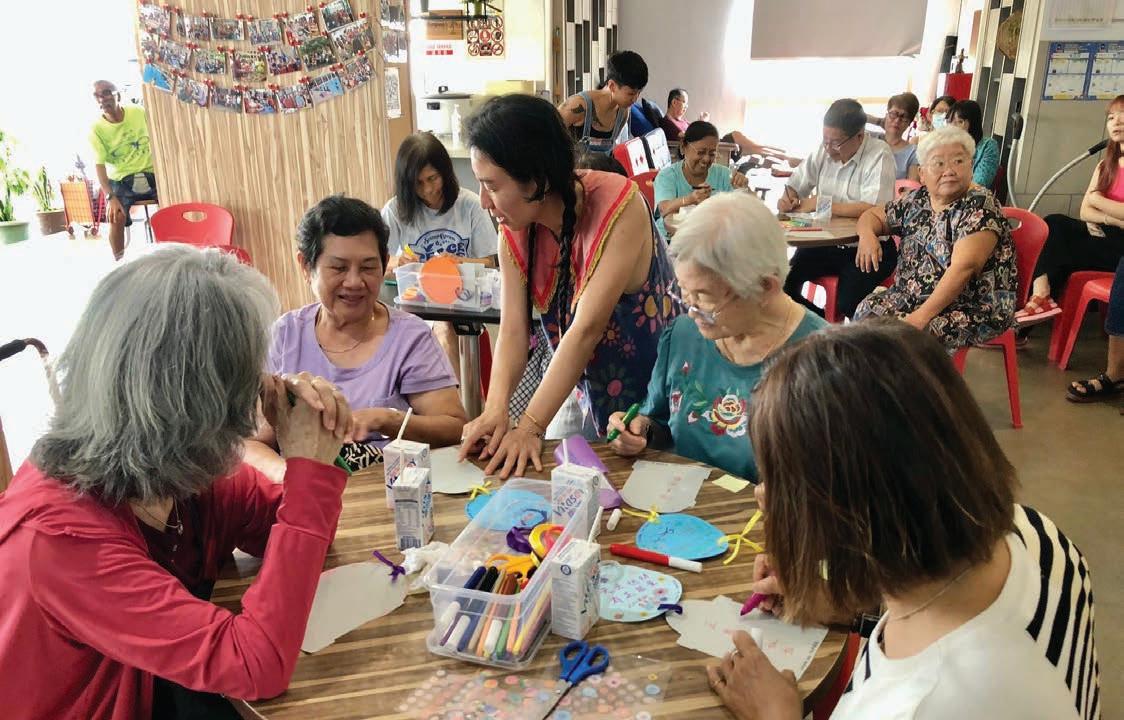
14 |
GeriCare provides both physical and teleconsultations by doctors and nurses to provide timely medical support for nursing home residents
Story
Cover
Yishun Health partners Both Sides, Now, a multidisciplinary arts-based movement, to engage residents in conversations on death and dying
JOINING HANDS FOR QUALITY, LONG-TERM CARE
Nursing homes have an important role in the Community of Carers, providing a safe and supportive home for residents with the long-term care needs. GeriCare is a collaborative partnership between Yishun Health and nursing homes, aiming to provide holistic geriatric and palliative care for nursing home residents.
Doctors and nurses provide timely medical support for nursing home residents, through physical and teleconsultations. The team works with nursing homes to build their staff capabilities through training programmes such as palliative care courses, nurse preceptorship, and Advance Care Planning (ACP) courses. This enables nursing home staff to identify and manage residents requiring palliative care, including the communication of residents’ conditions to their next-of-kin.
Mdm C, 82, was one patient who benefited from GeriCare’s partnership. A resident of Sunshine Welfare Action Mission (SWAMI) Home, she was frequently admitted through Khoo Teck Puat Hospital’s
(KTPH) A&E department. With her condition gradually deteriorating, GeriCare and SWAMI nurses jointly reached out to Mdm C’s family and conducted an ACP discussion, which allowed them to highlight Mdm C’s condition and her wish to pass on at the nursing home. In the week leading to her demise, GeriCare and SWAMI home co-managed Mdm C’s end-of-life care through teleconsultation reviews, and the provision of standby medications for symptom management. This enabled Mdm C to pass on peacefully in the familiar environment of the nursing home, surrounded by her loved ones and nursing home staff whom she had come to see as family.
MOBILISING COMMUNITIES TO ACTION

Beyond health and social care organisations, Yishun Health also works with non-traditional partners to engage residents in conversation about care and early preparation.
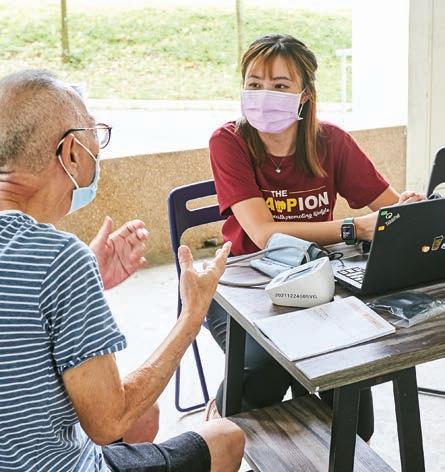
In 2013, ArtsWok Collaborative and Drama Box collaborated to start Both Sides, Now — a multidisciplinary arts-
based movement to start conversations on death and dying — as a temporary public art installation and programme in KTPH.
Since then, Both Sides, Now has taken a variety of forms. From 2014–2016, it toured public outdoor spaces in Khatib and Toa Payoh. From 2017–2018, Both Sides, Now focused on building relationships and mobilising resources in the heartlands of Chong Pang, involving residents at the Wellness Kampung in end-of-life conversations through art, workshops and other creative approaches. The production Closer, a public arts installation, was co-presented with 23 Chong Pang seniors at the HDB void deck in 2018 to further engage the community on end-of-life matters.
This year, Yishun Health is continuing to partner Both Sides, Now to engage seniors living in the north in similar conversations over a one-year period. In this iteration, an artist will employ art methodologies to guide them in exploring end-of-
| 15 WITH YOU WHERE YOU ARE PART 3 OF 3
“Our partner organisations are an added pair of eyes and ears, looking out for the needs of residents living in the community. Together, we form a stronger network that cares for residents — a Community of Carers.”
Dr Wong Sweet Fun Clinical Director, PHCT, Yishun Health
A conversation with a Regional Team Connector at the Community Health Post
life issues, facilitating meaningful conversations and creative expression in a safe environment. The residents will also be guided to co-produce creative projects to be shared at public platforms as a means of bringing community awareness and support to end-of-life issues, as well as arts-based approaches.
Ms Ngiam Su-Lin, Executive Director, ArtsWok Collaborative, shares, “The seniors who participated in the art-making process enjoyed the creative and dialogic process, which enabled them to explore, discuss and express their own values, feelings and wishes to do with leaving well. In turn, their artworks then encouraged their loved ones, neighbours and the wider community to reflect on living well and leaving well; and also served as a great reminder of the varied stories, collective wisdom, and support that exists in communities.”
ENABLING HOLISTIC PRIMARY CARE
Already, General Practitioners (GPs) play an important role in a range of Yishun Health’s Shared Care

Programmes. Among these is the management of diabetes, where stable patients are referred to a community-based GP or Family Physician, who takes charge of their follow-up care.
Patients not only benefit from the
An outing to the Asian Civilisations Museum organised by Both Sides, Now convenience and accessibility, but also receive more holistic care as community-based primary care physicians are in a unique position to deliver more comprehensive health management. With their strength in broad-based medical training, they can layer on preventive care, screening, vaccinations, and health promotion, as well as disease-specific care.
Partnerships like these are in line with Healthier SG (launched nationwide in July), where every citizen will be progressively encouraged to enrol with a family doctor of their choice to co-develop a health plan. This will be available at no cost for the first consultation.
More than 50 Yishun and Sembawang GP clinics have onboarded to Healthier SG as of 31 May 2023. Yishun Health is working to equip them with the knowledge and tools to be a touchpoint and link for residents to community resources. This includes the sharing of information platforms
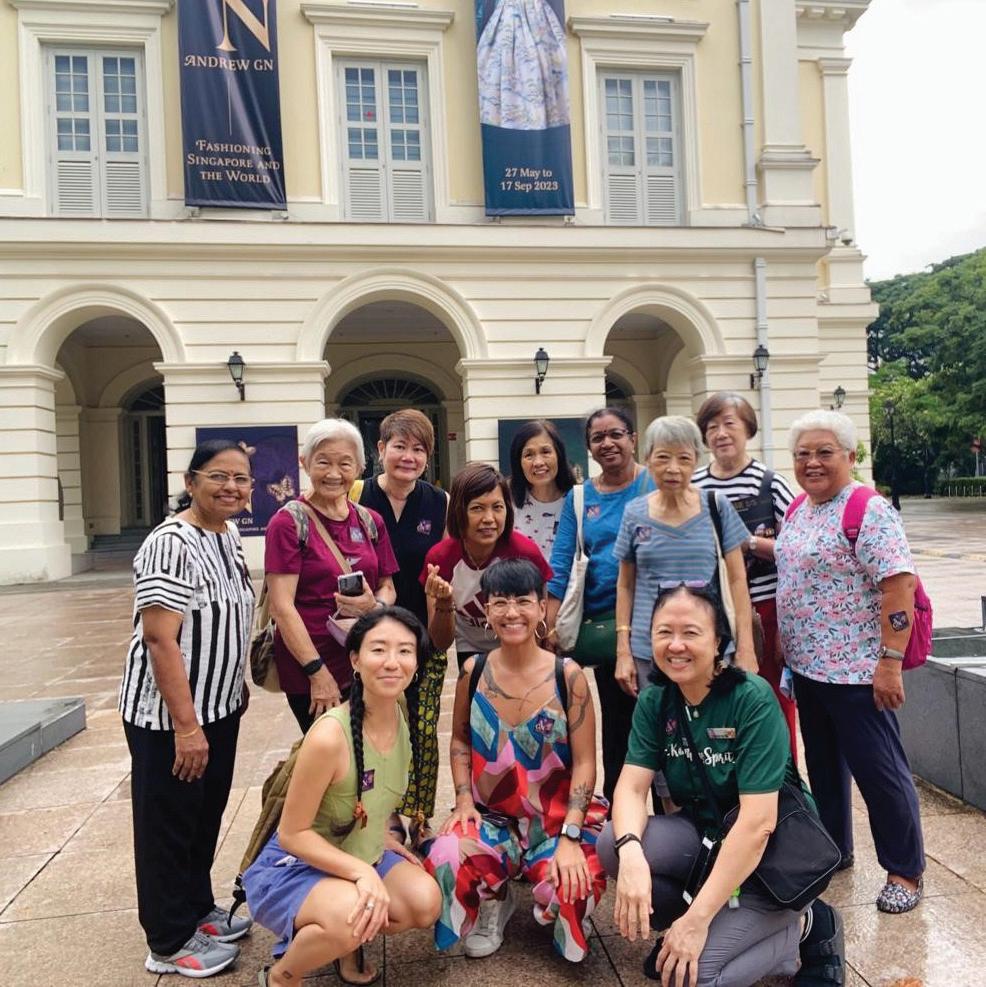
16 | Cover Story
Yishun Health doctors work closely with GPs to manage care for patients’ chronic conditions
such as Healthy365 (a mobile application by the Health Promotion Board that enables users to discover healthy lifestyle programmes and track their health behaviours) and the KTPH Community Resources portal with GPs.
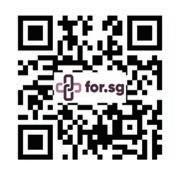
As of 20 June 2023, posters showcasing the support by Yishun Health’s Regional Team have also been put up at 34 neighbourhood GPs in Yishun and Sembawang. Residents can choose to walk into any of our CHPs, or connect directly to the regional connectors and nurses located in their neighbourhood using the locationspecific QR codes on the posters.
At the newly-opened GoClinic Yishun at Nee Soon Central, residents have been able to access these materials since June 2023. Their first resident connected with the Regional Team shortly after the launch to discuss how she can manage her health through free exercise programmes in her neighbourhood.
According to Dr Quek Khai Wen, a GP from GoClinic Yishun, this partnership will contribute to holistic care for the patients in his community. “I believe that by connecting my patients to the appropriate community resources, it
OUR COMMUNITY OF CARERS

Yishun Health has partnered more than 220 organisations islandwide, including:
117 GP CLINICS
can improve their overall well-being, quality of life, and health.”

Ultimately, says Elaine Toh, Executive Director, Regional Health Office, Yishun Health, the goal moving forward is to continue to bolster health through wellness care and not just sickness care by situating health care in the community. “Our care providers — be they social work groups, community activists, or primary care doctors — form a community of carers that are attuned to every day needs, providing support, resources and connections that enable the communities that they serve to be more resilient and empowered in their physical and psychosocial health.”
19 ACTIVE AGEING CENTRES
14 SOCIAL SERVICE AGENCIES
11 GRASSROOTS AGENCIES
8 NURSING HOMES
6 INTEGRATED LONG-TERM CARE (ILTC) PROVIDERS
6 RELIGIOUS ORGANISATIONS
5 ARTS-RELATED ORGANISATIONS AND GROUPS
| 17 WITH
YOU ARE PART 3 OF 3
YOU WHERE
Figures as of 1 June 2023
“Our care providers form a community of carers that are attuned to every day needs, providing support, resources and connections that enable the communities that they serve to be more resilient and empowered in their physical and psychosocial health.”
Elaine Toh Executive Director, Regional Health Office Yishun Health
Scan the QR code for the full list of Community Health Posts and their locations!
HAD YOUR SHOT YET?
In consultation with Dr Lew Kian Hwa, Family Physician, Family and Community Medicine, KTPH
I got the flu shot last year. Why do I need to get it again?
A flu shot is the best way to protect yourself and others from getting the flu, and from getting severely sick from it. If you are a caregiver and live with young children or older adults, getting a flu shot will help to protect these vulnerable groups from getting flu as well.
Even if you had a flu shot last year, it is important to get one this year as well. This is because flu viruses are constantly changing, so flu vaccines are updated every season to offer better coverage against prevailing strains. Getting a yearly flu shot also boosts your own protection as the effect of the flu vaccine lessens over time.
Why did I get the flu even after receiving the flu shot?
People who have been vaccinated against the flu may
still catch the flu due to several reasons:
• The flu vaccine has yet to take full effect. The vaccine takes around two weeks to provide full immunity against the virus. So if you are exposed to the influenza virus before then, you may still catch the virus.
• You caught another flu strain. The vaccine covers the most prevalent — but not all — strains of the influenza virus, so it is possible to still catch a strain of flu that the vaccine does not protect against.
• It is not the flu. You could have another respiratory illness with similar symptoms, such as the common cold, pneumonia, bronchitis, or stomach flu.
• You are an older adult. The flu vaccine begins to lose effectiveness in older people, but can still prevent anywhere from 30–70% of pneumonia and flu hospitalisations. This is why older adults are highly encouraged to get the flu shot.
18 | & A
Yishun Health experts answer your frequently asked questions about health, well-being and medical conditions. In this issue, we provide information about flu shots.
How will getting a flu shot benefit me?
Flu is a highly contagious respiratory illness that can result in serious complications, hospitalisation and death. Vaccination will lower the risk of these, as well as the risk of co-infection with COVID-19.
If you do catch the flu after vaccination, your symptoms are likely to be milder, you will be sick for fewer days, and there is less likelihood of passing it on to others.
Pregnant women and people with conditions like asthma, diabetes and other chronic illnesses are most at risk of developing complications from the flu, so a flu shot is important to prevent this from happening.
The Ministry of Health Expert Committee on Immunisation also recommends that caregivers and people living with young children or seniors, as well as healthcare workers and staff in healthcare institutions and establishments, will benefit from receiving a flu shot.
When should I get the flu shot? And what can I expect after getting it?
It is best to get vaccinated at least two weeks before flu season starts. In Singapore, which sits in the Northern Hemisphere, flu season generally occurs between November and February, while the Southern Hemisphere season is from May to July.
Every flu shot contains several strains of flu virus that are expected to be the most common for that season. Regardless of when you take the shot, getting vaccinated can still be beneficial because the flu can occur throughout the year.
After vaccination, some people experience mild side effects for a few days. These are signs that your immune system is working. Symptoms may include:
• Soreness, redness or swelling at the injection site
• Muscle aches
• Cold-like symptoms such as runny nose, cough, headache, low-grade fever, and sore throat
• Vomiting (more common in children)
If I am travelling, do I need the flu vaccine?
Yes; in fact, it makes good sense to protect yourself from the flu to ensure safe and pleasant travels. Flu is one of the most common vaccine-preventable disease for international travellers. Flu outbreaks are often linked to travellers. Travelling with large numbers of people in the same area, such as on cruise ships or in crowded tourist venues and gatherings, are high-risk areas for transmission.
The flu is not really a serious illness, so why is it so important to prevent it?
For most healthy people, getting the flu may be seen simply as an unpleasant inconvenience. However, for other groups of people — such as young children, older adults, and the chronically ill — the flu can be deadly. According to the Ministry of Health, influenza accounts for 600–800 deaths each year in Singapore.
This is why vaccination is so important as it limits the spread of the disease, reduces the incidence of transient illness for those who are well, and also protects the vulnerable around us from getting severely sick.
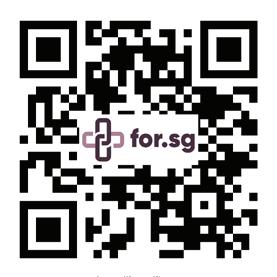
Flu Shot: Go Where?
| 19
Scan the QR code to find a clinic near you that offers the flu shot.
MICROSCOPIC FOES BATTLING
During the COVID-19 pandemic, infection control played a pivotal role in protecting patients and healthcare professionals. For Senior Nurse Clinician Foo Meow Ling, this work has long been a passion, one she has taken on with great dedication as an infection control nurse.

These days, it is not uncommon for us to be more conscientious about washing our hands, sanitising them regularly, and wearing face masks. These habits have long been ingrained in Foo Meow Ling since 2002, when she was a newbie to Yishun Health (then Alexandra Hospital).
This was not just part and parcel of being a nurse, but also due to a course that she undertook to become an Infection Control Link Nurse. As the title suggests,
20 | veryday Heroes
Link Nurses act as the bridge between their clinical area and the infection control team. They increase awareness of infection control issues in the workplace, and motivate their colleagues to adhere to and improve their infection control practices.
“I found the work very interesting and saw how it really helps on the ground,” says Meow Ling, “especially when, a year later in 2003, there was the Severe Acute Respiratory Syndrome (SARS) outbreak.” Her knowledge enabled her to alleviate the intense anxiety prevalent at that time due to the many unknowns, disease severity, and limited resources for the supply of Personal Protective Equipment (PPE).
In fact, the hospital became the only public hospital that remained SARS-free during the pandemic. Despite being the oldest public healthcare institution with a traditional open ward design and lack of proper isolation facilities, the hospital faced its surge in hospital attendances and patient volume well, with no documented intra-institutional spread of disease. Passing through this gauntlet of fire cemented Meow Ling’s passion for this area of work and, in 2007, she joined the Infection Control team, going on to take the helm in 2013.
CONTROLLING INFECTION FOR PATIENT SAFETY
Unlike traditional nursing, an infection control nurse maintains oversight of infection control across the hospital. While their role is less patient-facing, their efforts play an equally big part in ensuring a safe patient experience.
Some aspects of the work include planning, implementing, managing and evaluating infection control activities, policies and procedures, and doing quality control audits

and risk assessments. Training also forms a large part of the job. “Our goal is to partner our healthcare colleagues in identifying bacterial and viral threats to prevent their spread,” Meow Ling explains. SARS and COVID-19 aside, Meow Ling and her team are constantly ‘battling’ other pathogens such as Methicillinresistant Staphylococcus aureus (MRSA), Clostridium difficile (C. diff), Candida auris, MERS-CoV, and other emerging threats.
She says her best ‘weapon’ against these tiny invaders is knowledge. Armed with a Master’s in Public Health, thick skin, meticulous nature, and a tenacious attitude, Meow Ling sees her work as impacting not just patients within the hospital, but having a wider ripple effect. “When we prevent infections within the hospital, we protect our patients, our fellow healthcare workers, our families, and the whole community.”
WORKING ON THE GROUND IN MANY AREAS
When she is not fighting infection, Meow Ling is fighting for her colleagues as a union member, becoming Yishun Health’s Branch Committee secretary in 2018, then
its Chairperson in 2021. She also serves as a Council Member on the Healthcare Services Employees’ Union’s (HSEU) Executive Council.
In these roles, she has played an integral role in building and maintaining good labourmanagement relations between HSEU and Yishun Health. A leader who walks the ground, she is highly visible, approachable and empathetic.
This was especially valuable when fears and frustrations ran high during the recent COVID-19 pandemic. Acknowledging the impact of the intense workload, travel restrictions, and personal worries on her nursing colleagues, Meow Ling was actively involved with the nursing administration, human resource, and psychology departments to engage, listen, reassure and problem-solve. “During the conversion of general wards to isolation wards, some nurses were overcome with fear,” recalls Meow Ling. “We took time to explain to them the steps taken to keep them safe, such as implementing negative room pressure systems, mask-fitting, and the provision of PPE.”
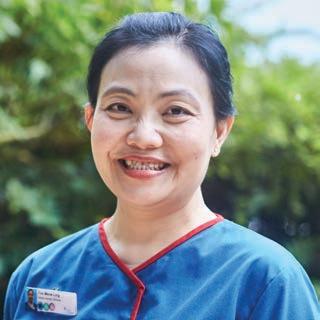
| 21
When we prevent infections within the hospital, we protect our patients, our fellow healthcare workers, our families, and the whole community.
Foo Meow Ling Senior Nurse Clinician, Infection Control, KTPH
This reassurance paid off, she adds. One nurse who had initially broken down in tears ended up becoming a spokesperson, stepping up to speak with and encourage other nurses whose wards were subsequently converted. “Through my experiences, I found that open and frequent communication is essential in times of crisis,” Meow Ling reflects.
During the pandemic, she also worked extensively to implement
infection control measures, enforcing ‘dirty-to-clean’ workflows, mask and PPE training, infection control training, contact tracing, and more. With foresight, she upskilled and reskilled dental clinic assistants, nurses, doctors and administrative staff as swabbers to serve the hospital better, especially when there was a surge or outbreak.
Apart from her work within Yishun Health, Meow Ling also conducted seminars and workshops for National Trades Union Congress (NTUC), and infection control audits for nursing homes, government agencies, dormitories, and unions.
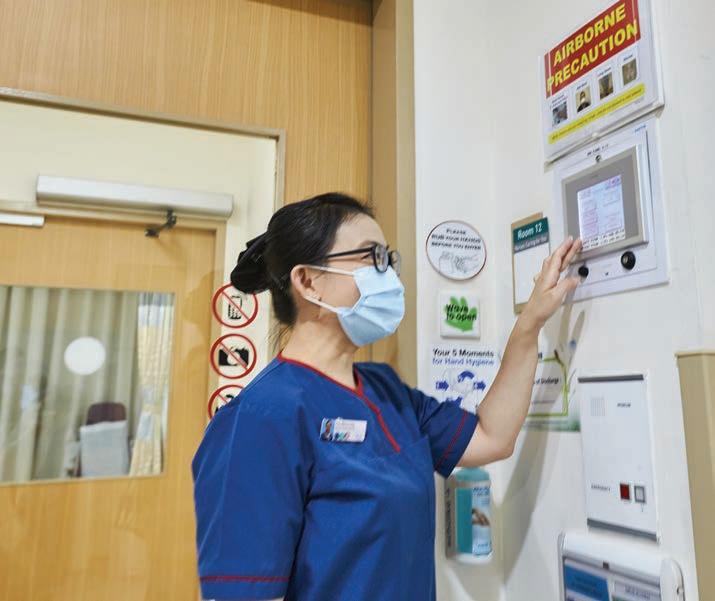
“Knowledge is power,” she says. “When we share knowledge, we equip people to act in the right ways and collectively keep the community safe.”
For her efforts, Meow Ling was awarded the Model Worker Award at the 2023 NTUC May Day Awards.
TINY INVADERS
Methicillin-resistant Staphylococcus aureus (MRSA) is a variant of the very common Staphylococcus aureus bacteria found on the skin surface.
Staphylococcus aureus is typically harmless but can potentially cause infections if it enters the skin MRSA, however, is a ‘super bug’ and is of concern because it is resistant to methicillin (a type of penicillin) and sevweral other classes of antibiotics, making it very hard to treat.
Clostridium difficile (C. diff) is a common bacteria that lives in the intestines of many people and is part of the normal digestive flora. However, an imbalance of the microbiome can cause C. diff to grow out of control and lead to diarrhoea and other issues. This imbalance can be caused by antibiotic medications.
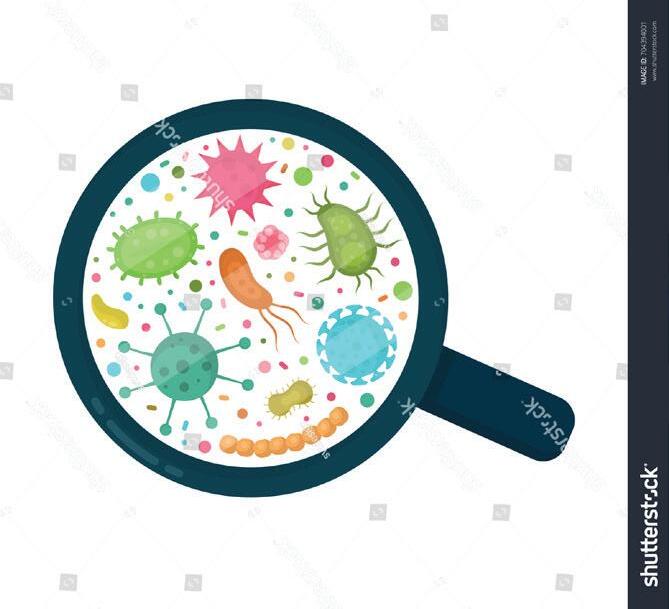
Multidrug-resistant tuberculosis is a form of tuberculosis infection that is resistant to treatment with at least two of the most powerful first- or second-line medications.
Candida auris , an emerging fungus infection, is multidrugresistant, highly communicable, and can cause life-threatening infections in medically vulnerable populations.
22 | veryday Heroes
When we share knowledge, we equip people to act in the right ways and collectively keep the community safe.
Senior Nurse Clinician Foo Meow Ling also conducts infection control audits for nursing homes, government agencies, dormitories, and unions
TASTY, TOO HEALTHY CAN BE
Imagine cooking some 1,000 meals three times a day, and having to take note of special dietary needs and nutritional value in addition to texture, flavour, look and variety. For chefs from Yishun Health’s Food Services team, this is all in a day’s meaningful work that contributes to the health and well-being of patients.
When he was working in one of Singapore’s famous Indian restaurants, Chef De Partie Ali Saikh Arsed often felt like an octopus. Cooking à la minute (to order) for the flood of orders during the peak lunch and dinner timings was gruelling. The
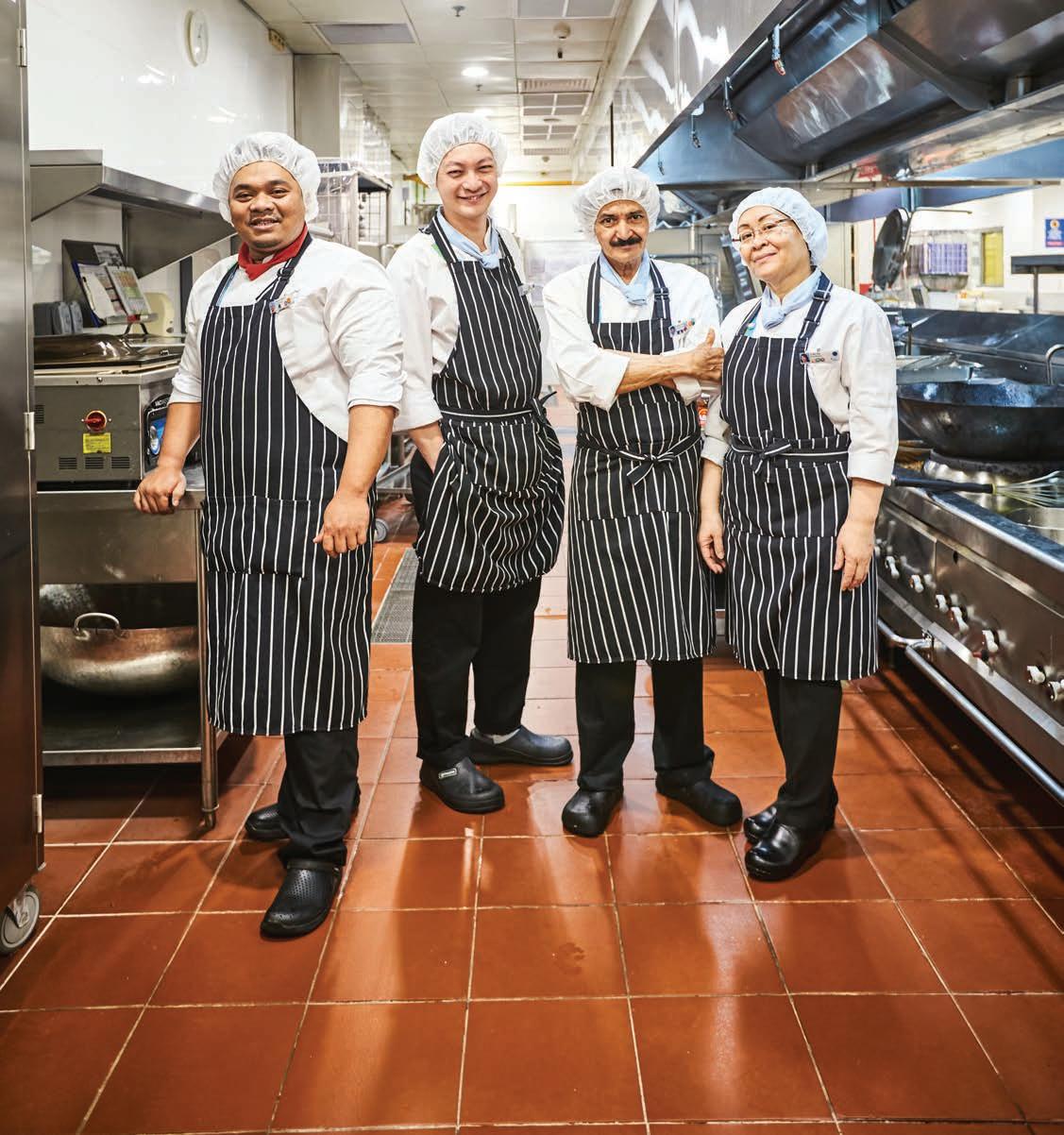
hot, cramped environment, hectic pace, long hours and odd timings are common challenges of working in a restaurant, hospitality or commercial kitchen.
Sous Chef Muazzin Shah Bin Mohd Shah, who previously worked in a hotel, shares that the long shifts and days ending at midnight meant
that he had little time for himself, his family, or a healthy lifestyle. It is a similar tale for Demi Chef De Partie Tuthi Bte Bahar and Chef De Partie Pay Jun Loong, who used to work in a large-scale commercial kitchen and bakery, respectively.
These days, they bring their passion for cooking to their work as
| 23 ive Well
ive Well
chefs in
Yishun Health’s kitchens.
Though the work is comparatively less stressful, it still has its unique challenges, but in an environment they enjoy much more, which is why all of them have dedicated more than 10 years to the organisation. “We are like family here; everyone here is like my brother or sister,” says Chef Jun Loong, also known affectionately as Chef Ah Loong. The camaraderie of the close-knit team keeps them working hard behind-the-scenes to provide meals that play an important
role in helping patients in their recovery and rehabilitation.
HEALTHY WORKPLACE, HEALTHY MINDSET
For Chef Tuthi, working in a “healthy place” has been healthy for her, too. “I have changed my personal cooking style,” she says.
“I use less salt, more spices, and lots of vegetables whenever I can. Sometimes, my friends joke that my cooking tastes different, but they still enjoy the dishes.”
Getting this ‘passing mark’ from others is also how Chef Shah tests the recipes he creates for patients.
“I sometimes try out the recipes and cook with my three kids at home,” he shares. A thumbs up from his children is always a good sign that the recipe works — and proves that healthy can be tasty, too.
The trick, says Chef Ali, is to rely on more spices and layer flavours.
In fact, he recently devised a low-sodium curry spice mix, called SpiceSmart, specially for a campuswide campaign that aimed to promote healthy cooking as a form of self-care.
VALUED MEMBERS OF THE TEAM
This ability to contribute not just their cooking skills but also their ideas to the menu is one reason why Chef
Ah Loong enjoys his work. Rather than sticking to tried-and-tested recipes, the team gets to work together to develop new dishes. “There are many chances to try, be adventurous, and explore new things,” he said.



24 |
“We are like family here; everyone here is like my brother or sister.”
Chef De Partie Ah Loong KTPH
“I have changed my personal cooking style. I use less salt, more spices, and lots of vegetables whenever I can.”
Demi Chef De Partie Tuthi KTPH
In fact, these four chefs are working with the rest of their colleagues to develop new menus for patients. “I like how we can share input and develop recipes together; I feel that I’m an important part of the team and I can contribute,” says Chef Shah. “It’s interesting to see how we can adapt traditional recipes to the hospital so that patients feel that they are still eating something authentic and feels home-cooked,” adds Chef Tuthi.
The process is highly collaborative, explains Chef Ali. To cater to dietary needs for specific medical conditions, the chefs have to flex their creative muscles. For a ‘good renal diet’, for instance, they are given a list of appropriate ingredients and parameters. They then devise a recipe, and work with each other and Yishun Health’s dietitians to tweak it for optimal nutrition and taste. “It feels good when the food is both tasty and healthy,” says Chef Ah Loong, especially when they are able to show that it is possible to turn hawker favourites into healthy dishes one can cook at home. In fact, their recipes are a regular feature in this publication, and they often hold cooking demonstrations for staff as well as the public.
It all goes towards showcasing their love for food and people. Chef Shah says, “When we plan menus and cook, we always think of the patients whom we see as our parents.” Adds Chef Tuthi, “When we cook with our hearts, it will always show.”
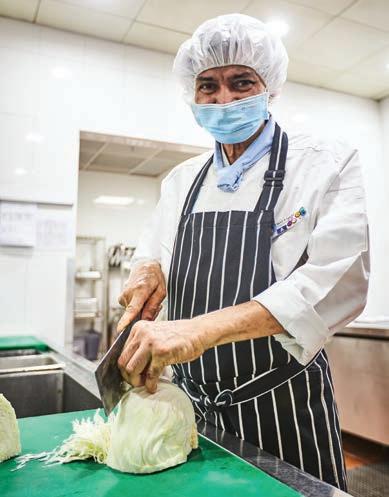
CHEF’S PICK
These are the favourite dishes that the chefs have created for Yishun Health.
Chef Shah: Nasi Ambeng
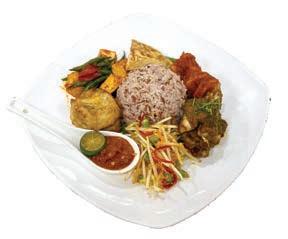
Served with healthy mixed brown rice, home-made vegetable urap with low-salt seasoning and low-fat chicken with monkey head mushroom rendang and prawn sambal
Chef Tuthi: Grilled Vegetable Kebabs

Fresh-cut mixed vegetables on a skewer grilled with low-salt and soya oil
Chef Ah Loong: Muifan
Lower in salt and fat, more vegetables
Chef Ali: Chicken Masala
Low in fat, with excellent protein source, and vitamins and minerals from the spices used
| 25
“When we plan menus and cook, we always think of the patients whom we see as our parents.”
Sous Chef Shah KTPH
“To cater to dietary needs for specific medical conditions, we have to flex our creative muscles.”
Chef De Partie Ali KTPH
THINGS ABOUT… 5
ORTHODONTICS
Orthodontics is a branch of dentistry that specialises in the alignment of the teeth and jaw. Commonly associated with braces, this specialty contributes to a healthier mouth and more beautiful smile.
In consultation with Dr Cindy Ho, Consultant, Dental Surgery, KTPH
BRACES ARE NOT JUST FOR COSMETIC IMPROVEMENTS
Braces work to straighten the teeth and improve facial aesthetics and self-confidence. But they impart more than aesthetic benefits! Overlapping and crowded teeth are difficult to keep clean and may be more prone to plaque build-up, leading to cavities and bad breath. Misaligned, gaping or protruding teeth can also lead to the uneven wearing of teeth, speech impediments, and other issues. Straight teeth are easier to clean and floss, and they trap less food and bacteria.
26 |
About...
Things
1
Self-ligating braces









BRACES ARE FOR ALL AGES
While it is true that braces are most effective and popular in children and





















teens, braces treatment can start at any age. In fact, many people embark on orthodontic treatment in their adulthood to attain the smile they have always desired. As long as your teeth are healthy and you are committed to maintaining a good level of oral hygiene, you can get braces.
CONSISTENCY IS ESSENTIAL, EVEN AFTER REMOVAL OF BRACES
Our teeth move over time. In fact, they have a natural tendency to move back into their original
position after the forces holding them have been removed. To maintain your smile, it is important to wear your retainers diligently. This is especially important in the first three to six months after having your braces removed, so wear your retainers as often as possible during this time, and consistently afterwards.
BRACES COME IN SEVERAL OPTIONS
When it comes to braces, people usually think of conventional metal-and-wire configurations. However, braces come in several options to suit your preferences and goals. These include:


• Fixed braces: These are traditional braces that can be made of metal or tooth-coloured ceramic. They consist of stainless steel bands, brackets and wires. Each bracket is bonded to a tooth, and a thin, flexible archwire runs through the brackets. Tiny elastic bands called ligatures are used to keep the wire firmly in place.
• Self-ligating braces: These look like traditional braces but use a built-in system to hold the archwire in place instead of ligatures.

• Lingual braces: These braces look similar to traditional metal braces but are bonded to the back surfaces of the teeth instead of the front.
• Clear aligners: These ‘invisible’ braces realign the teeth using custom-made trays that are worn for up to 22 hours a day. These trays apply consistent pressure to move the teeth in small increments over time. As the teeth move, a new tray is used every one to two weeks until the goal is reached.
Braces and aligners each have their individual advantages; a trained orthodontist will be able to advise on the right treatment and braces type to help you achieve your desired outcome.
GETTING AN ORTHODONTIST APPOINTMENT IS VERY FUSS-FREE
Orthodontists generally do not require a referral from a dentist. If you feel that you or your family members’ teeth need realignment or correction, you can easily schedule an initial consultation with an orthodontist.
The KTPH Orthodontics Clinic is located at Tower B, Level B1.
To make an appointment, call 6602 2828.
| 27
2 4
5
Fixed braces
Lingual braces
3
Clear aligners
DRIVING CAMPUS SAFETY FOR PATIENT SAFETY
Safety is no accident. It takes a concerted effort from every person at every level. Yishun Health makes safety culture a priority, addressing it across multiple facets — not only to ensure efficient operations but, critically, to protect staff from harm so that they are at their best to deliver safe, compassionate, quality care.

Patient safety is one of the overarching goals of healthcare. In order to sustain a high level of safety, hospital staff must themselves be kept safe and free from injury or harm. This is why Workplace Safety and Health (WSH) plays such an important role at Yishun Health.
As Geraldine Yeo, Director, Operations Admin, KTPH, points out, “At the frontline, patient safety comes first. And in the backroom, campus safety is the sound foundation that keeps the
hospital stable and functioning. We cannot compromise patient safety in a scenario where we ourselves are not safe.”
Overall, campus safety work includes aspects such as Emergency Planning, which seeks to safeguard people from harm and ensure the safety and protection of life assets and the environment in an emergency situation; Business Continuity Planning, which focuses on limiting or avoiding disruptions of key business operations during
adverse circumstances; and Data Protection, the safeguarding of personal and sensitive information from unauthorised access (see box on page 31). Additionally, there is infrastructure and facilities safety as well as ongoing workplace safety, which enable staff to do their jobs well to maintain quality patient care.
WORKPLACE SAFETY AND HEALTH
In the healthcare setting, the most common type of injury among
28 |
workers are slips, trips and falls, followed by bed rollovers, sprains and strain, and verbal or physical abuse. Though such accidents may be viewed as part and parcel of the job, the WSH team is focused on changing such mindsets. “We take the stance that every injury is preventable, in line with our pledge towards Vision Zero (see box below),” says Geraldine.
Their work lies in establishing governance structures, operating procedures, systems and measures to achieve this common goal. While the implementation happens on the ground, the responsibility lies with the leadership.
And prevention starts with a lot of on-the-ground work. Gennifer Lee, Senior Manager, Operations, KTPH, explains that this involves staff injury investigations. They visit and study every injury or incident to understand how it happened and what led to it. “We also provide support to staff who have been affected, send them Care & Concern cards or refer them to PALS, a counselling service specifically for staff,” she adds. Most importantly, the team studies how to prevent reoccurrence by determining root causes.
On top of injury investigations, the team conducts safety investigations around the campus, and even works
with contractors, vendors and ‘space owners’ (or area in-charges) to flag potential blind spots.
To engage the whole organisation, the team also works with Yishun Health’s Safety Committee, another platform that champions safe work practices and fosters a safety culture among staff. Together, they often conduct events that promote safety, to influence actions through changing mindsets. “We set out an annual work plan, focusing on strategic areas with reinforced good processes, practices and standards. It always goes back to protecting staff, our most precious resource”, says Co-chair of the Safety Committee, Dr Liaw Chen Mei says. Geraldine emphasises,

“We have to ensure our staff can do their job well so that, together, we can achieve our mission of delivering quality care to patients. If we constantly do the work and put our protocols in place, we can respond to any incident with speed, efficiency and calmness.”
VISION ZERO , an ongoing national safety movement launched in 2015, seeks the commitment of employers, workers, unions and government to embrace zero harm, a mindset that workplace injury and illhealth are all preventable. In February 2023, Yishun Health, as part of the bigger National Healthcare Group, joined 13 other healthcare institutions in taking a pledge towards Vision Zero. In keeping with this, we have committed to:
• Implement a near-miss reporting system
• Encourage staff to speak up for safety
• Engage staff and partners through WSH events
• Encourage partners to pledge
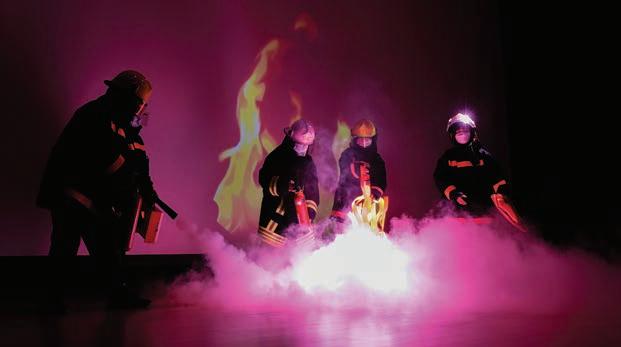
| 29
“We take the stance that every injury is preventable, in line with our pledge towards Vision Zero.”
GERALDINE YEO DIRECTOR, OPERATIONS KTPH
(L-R) Ben Lee, Assistant Manager; Gennifer Lee, Senior Manager; and Geraldine Yeo, Director
A big part of the work across all three areas is risk assessment, says Teo Wee Loon, Deputy Director, Operations, KTPH. “Risk assessment analyses the scenario, issue or emergency situation that we may be facing; from this, we develop our response plans.”
These can be in the form of converting parts of the hospital into clinical areas or in setting up overflow protocols, such as diverting non-urgent cases to GPs and other hospitals. It also involves coming up with practical and efficient ways to secure patient data.
Beyond these expected scenarios, Wee Loon notes that the team is taking steps to futureproof. “We are moving towards anticipatory operations so that we can mitigate and respond to future threats to protect workers and continue essential services.”
EMERGENCY PLANNING: ALWAYS AT THE READY
Twice a year, the alarms sound, the Personal Protective Equipment is donned, and the ‘casualty’ numbers start to rise. All this is part of the regulated drills that keep Yishun Health on its toes and prepared for a mass casualty from a fire or

is the most conspicuous example of emergency preparedness, the majority of the work actually takes place behind the scenes every day.
As Senior Manager Magalingam S/O Veeman shares, Emergency Planning is an ongoing process of developing, updating and reviewing response plans for a wide variety of scenarios. “We work closely with internal stakeholders to make sure their plans are up to date, and we are also in frequent contact with regulators and authorities such as Ministries, the police, and civil defence to meet their guidelines and requirements,” he says. This planning is then put to the test in the form of table-top exercises and emergency drills. “These simulations make sure that our plans are working,” Magalingam emphasises. “There is no point having a plan on paper that doesn’t work in real life.” These exercises also help flag gaps and areas of improvement.
This preparedness is not just limited to fire. The team considers a wide range of scenarios, from civil and national emergencies such as mass casualties incidents, disease outbreaks, and extreme weather phenomena such as floods to system failures such as power and
for several layers of crisis and work out how we can handle multiple crises simultaneously.”
BUSINESS CONTINUITY PLANNING: RESUME, RECOVER, RESTORE
Business Continuity Planning (BCP) has come to the forefront in the last few years, especially as the pandemic pushed organisations to adapt in the face of lockdowns and safe distancing measures. Muhammad Firdaus Bin Jamel, Assistant Manager, Operations, KTPH, explains that, since its implementation at Yishun Health in 2018, BCP has been an integral part of the campus’ preparedness response. “These plans act as a safety net so that the necessary plans and protocols are already in place should a crisis arise. Though

30 |
every crisis is unique, these plans give us a starting point that we can refer to in order to move quickly.”
Firdaus works with the BCP coordinator in each department to audit and update plans that are designed specifically for their operational needs and goals. “The work is very interesting because I get to interact with the majority, if not all, the departments in the hospital to learn about how they function. This gives me insight into the nitty gritty of how each department works.”
Every plan varies, given the diversity of roles and functions, but they share common considerations. These include factors such as identifying core functions, essential equipment and systems, alternative sites of work, data backups, and other contingency resources. To ensure these plans work in a crisis, Firdaus stresses the importance of drills, reviews and trainings. “We work closely with our Emergency Planning teammates and all our colleagues in the hospital,” he says. “Apart from these plans and processes, we also rely on our culture of collaboration. Though the work can be complex, our kampung spirit and shared goals of care keep us going.”
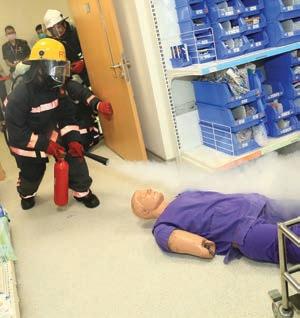
DATA PROTECTION OFFICE: SAFEGUARDING PERSONAL DATA IN HEALTHCARE
The world runs on data. In medicine, it is an essential component of safe, accurate and decisive decision-making. The Data Protection Office works with teams across Yishun Health to ensure proper use of personal data, so as to garner public trust in healthcare.
The data safety mindset started to be ingrained in Yishun Health in 2016, when the organisation began to take a more formalised approach to data
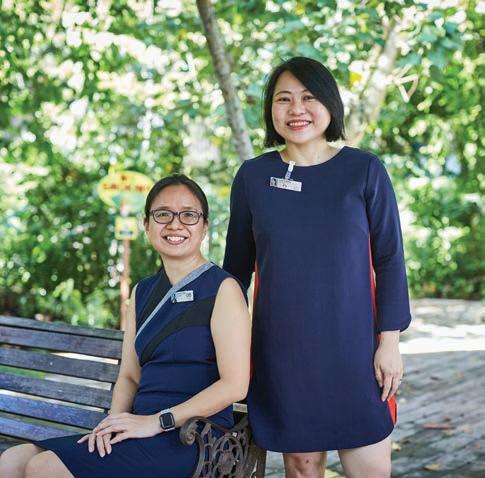
protection. Ong Poh Suan, Assistant Director, Operations, KTPH, shares, “We created greater governance through policies, and a more structured framework to raise awareness and reinforce the data protection culture.”
Senior Manager Yvonne Wong stresses that data protection measures are crucial because healthcare institutions collect personal and medical data that can be both confidential and sensitive. As scam calls and texts are on the rise, there is a growing concern about who has our data and how it is being used. “We want to ensure that patients feel safe when they entrust their personal data to us for patient care,” she says.
Depending on the users’ purpose and objectives, Yishun Health ensures that personal data of patients and staff are reasonably protected while balancing compliance requirements and operational efficiency. This means implementing appropriate protection measures in daily work processes, facilitating an understanding of data protection risks and requirements, and ensuring due diligence of vendors and external partners involved in processing patient data. “As a healthcare organisation, safety for us is not just in ensuring our patients’ physical well-being, but also in safeguarding their confidential information,” Yvonne adds.
ABOUT THE PERSONAL DATA PROTECTION ACT (PDPA)
The PDPA provides a baseline standard of protection for personal data in Singapore. It complements sector-specific legislative and regulatory frameworks such as the Banking Act and Insurance Act. It comprises various requirements governing the collection, use, disclosure and care of personal data in Singapore.
| 31
(L-R) Ong Poh Suan, Assistant Director; and Yvonne Wong, Senior Manager
MAKE YOUR DOC THE FIRST STOP
Across Singapore, Acute & Emergency (A&E) departments are seeing a high volume of patients, leading to long waiting times and treatment delays. To better utilise medical resources while ensuring timely care, the GPFirst programme was introduced. Here is what you need to know.
The GPFirst programme encourages patients with non-emergency conditions to seek treatment at a General Practitioner’s (GP) clinic rather than at the A&E. This enables the A&E to focus on attending to patients with lifethreatening and critical conditions.
Under GPFirst, patients will first be assessed by participating GPs. If they determine that emergency care is required, the patient will be referred appropriately to an acute hospital or Urgent Care Centre (UCC) in their region.
If patients are staying in the north area, they are given priority at the KTPH A&E or at the UCC @ Admiralty. These patients will also be given a $50 subsidy on their A&E bill to help offset the cost of the GP visit.
USE THE A&E MORE RESPONSIBLY AND EFFECTIVELY
The A&E is for patients who are critically ill. Seek emergency treatment at hospitals only if your condition is serious or life-threatening.
32 | aily Dose
In consultation with Dr Michael Fung, Senior Consultant and Deputy Head, A&E Care Centre, KTPH
SEE A GP FIRST
for conditions with mild to moderate symptoms



Cold or flu with:
Nausea and vomiting with:
Strains or sprains with:
• sore throat
• fever
• mild to moderate pain in the abdominal area

• mild to moderate pain





• swelling with no deformity
• flu-like symptoms of cold and runny nose
• diarrhoea
• bruises
To find your nearest GPFirst clinic, scan this QR code, visit https://for.sg/ktphgpfirst or look out for the GPFirst decal outside the clinic.


• earache

| 33
CAJUN ROAST CHICKEN
Wholesome and hearty, this tasty roast chicken meal is nutritious and easy to put together with kitchen staples.

Recipe provided by Nge Aik Tee, Executive Chef, Food Services, in consultation with Nutrition & Dietetics, KTPH
INGREDIENTS
Serves 8
• 15g pre-mixed Cajun spice rub
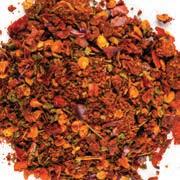
• 20ml cooking oil
• 180g onion, roughly chopped
• 100g carrot, roughly chopped
• 1.3kg whole chicken
NUTRITIONAL INFORMATION (PER SERVING)
METHOD
1. Pre-heat oven to 200oC
2. In a small bowl, combine the Cajun spice rub and cooking oil
3. Rub the chicken with the spice rub
4. Assemble the onions and carrots onto the base of a deep, oven-safe dish
5. Place the spicerubbed chicken on top of the vegetables and roast at 200oC for 10 minutes, then reduce the heat to 165oC and continue to roast for 20 minutes
6. Remove the chicken from oven and serve hot
343kcal >3.2g 29.6g 23.5g 6.8g 3.2g 12.1g 124mg 1.7g 175mg 537mg >329mg Energy Carbohydrates Protein Fat • Saturated • Polyunsaturated • Monounsaturated Cholesterol Dietary Fibre Sodium Potassium Phosphate
cut & keep cut & keep 34 |
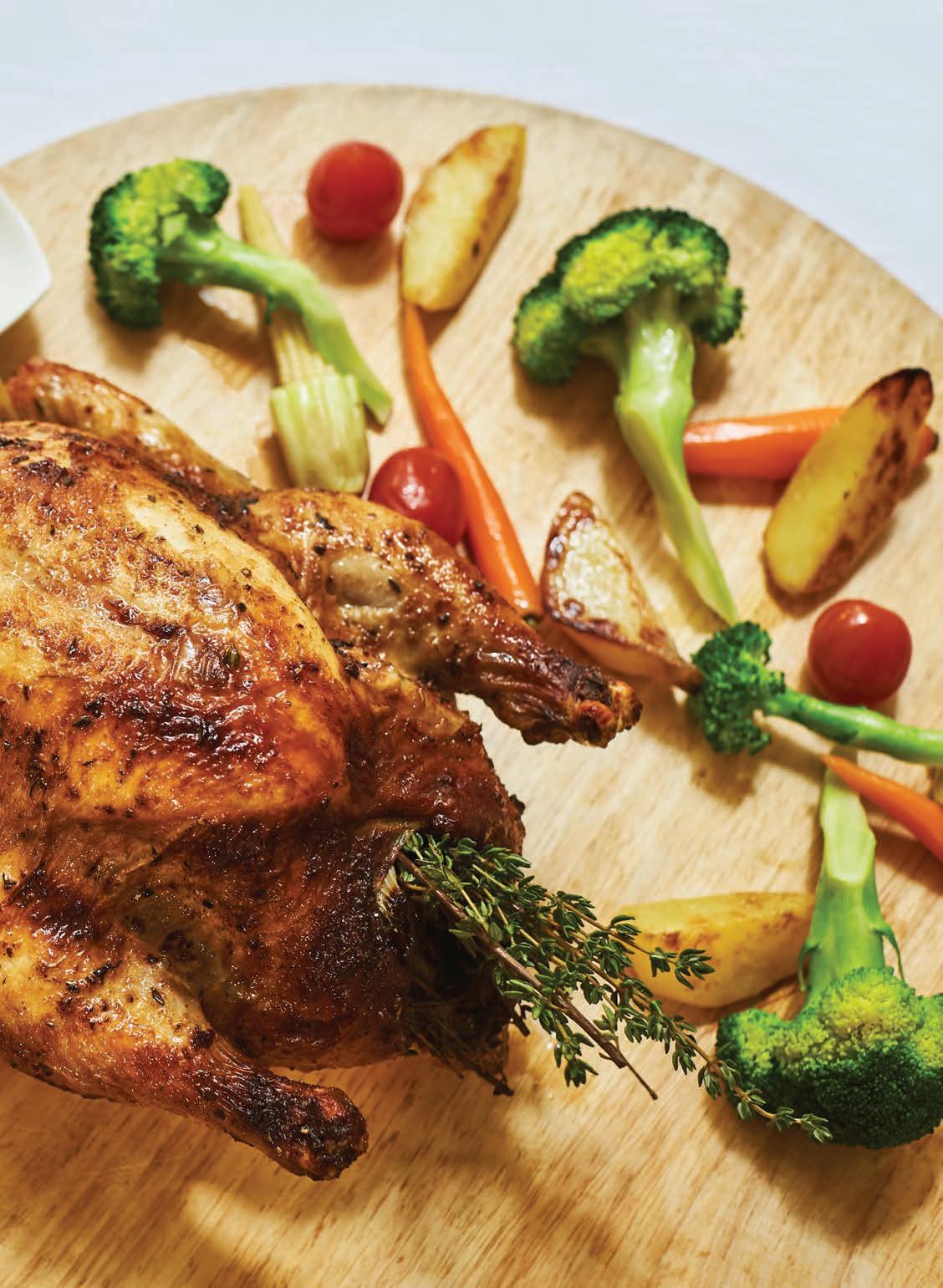
| 35
Nurses’ day special




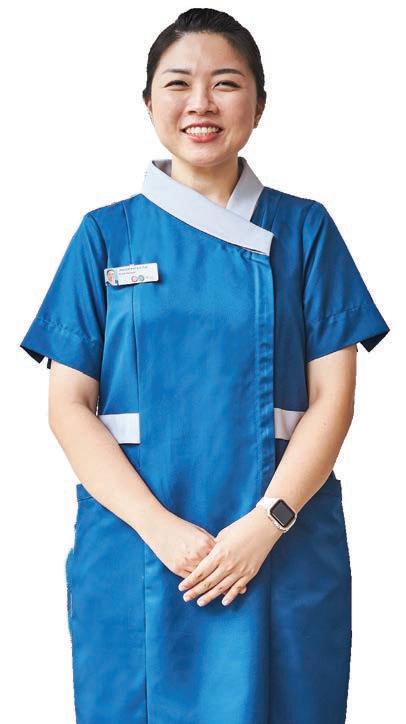




Tough times don’t last; tough people do
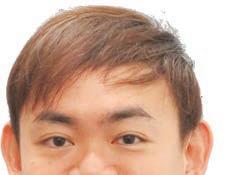
Despite the unprecedented obstacles presented by the global pandemic, our nurses have remained steadfast in their commitment to care for patients and families, support their colleagues, and uphold the highest standards of their profession. As we transition to a new phase, we recognise the essential role that they have played and will continue to play in shaping the future of healthcare.
This year’s theme — ‘Our Strength, Our Future: Against All Odds’ — aptly speaks to the remarkable fortitude and determination that our nurses have displayed. It is a testament to their unwavering spirit and their willingness to face adversity head-on, to rise above the challenges, and to emerge stronger and more resilient than ever before. As we look to the future, we are inspired by the courage of our nurses, who are

truly the backbone of our healthcare system. They are the ones who will lead us forward and continue to make a positive impact in the lives of countless individuals and communities. Despite the odds, our nurses always rise to the occasion, adapt to new situations, and find innovative ways to provide care and support to those in need.
So let us celebrate our nurses with all the gratitude, admiration and respect they deserve. Let us honour their strength, courage and unwavering dedication to their profession. Let us look to the future with hope and optimism, knowing that our nurses are truly the ones who will steer us through any challenges that may arise. On behalf of everyone involved in this year’s Nurses’ Day celebration, I wish to say “thank you” to all our nurses. Happy Nurses’ Day, and may you continue to shine as bright as the true stars that you are!
 DR NG CHONG JIN CHAIRMAN, NURSES’ DAY ORGANISING COMMITTEE
DR NG CHONG JIN CHAIRMAN, NURSES’ DAY ORGANISING COMMITTEE
urses’ Day 2023 | 37
FROM paTERNALISM TO PARTNERSHIP

Every Nurses’ Day, we recognise our nurses for their unwavering strength, resilience and dedication to quality care. This Nurses’ Day, I would like to look to the future, and envision how we can take nursing further and play even greater roles outside of the acute, long-term care and community settings.

When we look at the future of nursing, it is usually through the impact of technology, the need for capability-building, or navigating changing demographic and socio-economic trends. These are critical issues that we must continue to explore and engage with. As we reflect on what it means to show strength and prepare for the future, I would like for us to think about how we can enhance our ability to nurture relationships and pass knowledge on. One idea is to extend our mindset from ‘paternalism’ to ‘partnership’.
Nurses are important in healthcare. All of you possess a special blend of knowledge, skills and experience that make you uniquely positioned to care. But how do we also bring these capabilities to enable and empower the ones we look after so that they can self-manage, make informed decisions, and be active participants of their own health?
This is where the partnership mindset comes in. Embracing partnerships will enable nurses to move from being the sole provider of care to roping in and equipping a network of helping hands, thus enabling care to move with patients wherever they are in the healthcare ecosystem.
To effectively form partnerships of care, we must start with building meaningful relationships that are based on trust, empathy and effective communication. When we take the time to establish rapport with families, acknowledge their expertise, and invite their input, we create an environment where patients feel supported and respected in their healthcare journey. This, in turn, allows us to engage and involve them in their care plans. Only then can we successfully equip patients with knowledge, foster their independence, and promote self-advocacy.
As we build health literacy and greater capabilities for self-care in patients, caregivers and even our ancillary colleagues (such as healthcare assistants and patient care officers), we can then move up the value chain to improve our clinical expertise and skillsets, elevating the level of care overall.
This connection we form with our patients must start with ourselves. When we draw out and listen to the stories
of others, we must share ours, too. When we share a little bit of our lives, we allow our patients to see us beyond our profession and as another person whom they can connect with. It makes them more open to our advice and recommendations. Just as we get to know our patients’ backgrounds and preferences to improve our care for them, our own experiences help enhance our interactions, especially as we move towards relationship-based care.
This is how we learn and support one another — be it in working through difficulties, passing on skills, or building our bonds of camaraderie. And this openness is relevant to how we can better navigate work-life as well. While it is healthy to separate our professional lives from our personal lives, integrating some of our skills and interests into each realm can be helpful.
Your interests, hobbies and passions are integral to you, making you not just a special individual but a better nurse. Your life outside work can bring so much strength to your job — adding excitement to your day, fostering your adaptability, bringing joy to work, and developing joy in work. Your interests outside of work build unique and transferrable skills, stimulate your creative and problem-solving abilities, and drive personal development.
I hope that, even as we continue to dedicate ourselves to building sustainable, resilient and person-centred care, we also take the time to remember who we are, what we love, and how this fuels our calling. This is how we stay strong and meet the future with resilience and optimism.
Happy Nurses’ Day!
38 |
MS SHIRLEY HENG CHIEF NURSE, YISHUN HEALTH
THE three ‘E’s of patient care

Our nurses at YCH commit to delivering exemplary patient-centred care, and to be progressive and innovative while responding to the challenges of a changing healthcare landscape. And we aim to provide them with continued opportunities for growth through education and clinical trainings in an array of specialties, including geriatric, palliative, surgical and rehabilitative care.
ENGAGING, EDUCATING AND EMPOWERING
The future of nursing rests on our ability to educate and empower patients. This is especially relevant as we make a greater shift to prioritise preventive care.

As a system, we are striving to bring healthcare closer to people and anchoring care in community. At YCH, we are entrusted with the responsibility of delivering interdisciplinary, holistic care in the recuperation and rehabilitation of patients. And we recognise that families play a pivotal role in the health and recovery of their loved ones. By forging partnerships of care, we can create a powerful alliance, enabling us to provide the best possible care experience.
And as healthcare becomes more complex and technology advances, nurses must be at the forefront of providing evidence-based education to our patients and their caregivers. By engaging, educating and empowering them to be active participants in their care, we can bring about profound benefits to patients and their families, such as fostering dignity and independence.
ENGAGING: Gaining valuable insights into patients’ lives outside the healthcare setting and using these to tailor personalised and patient-centred care plans and interventions that cater to individual requirements and circumstances
EDUCATING: By equipping families with knowledge about medication management, symptom recognition and lifestyle modifications, we can strengthen their ability to provide ongoing support
EMPOWERING: Knowledge and relationship foster a sense of autonomy and increase motivation because there is a shared sense of responsibility and accountability. This improves patient outcomes and creates an environment where families feel supported
Partnering families is a vital aspect of how YCH delivers exceptional care. By combining mutual expertise, knowledge and compassion, we can improve outcomes and make a lasting difference in the lives of those we serve!
| 39 urses’ Day 2023
MS YVONNE TAN HEAD OF NURSING, YISHUN COMMUNITY HOSPITAL
ith her warm smile and approachable nature, Mdm Chua
Gek Choo has been a joy and blessing to all who have met her, be they patients, nextof-kin, students, allied health professionals, doctors or fellow nurses. She officiallyvretired as Yishun CommunityvHospital’s (YCH) Director of Nursing in December 2022.

For some 50 years, Mdm Chua dedicated her life to her one true calling: nursing. With deep compassion, commitment, humility and humour, she rose through the ranks to take on many leadership positions, such as YCH’s Deputy Director of Nursing and Team Lead of Khoo Teck Puat Hospital’s Inpatient Planning Committee. She was also recognised at the Public Sector Transformation Awards Ceremony, under the Exemplary Leader category, in 2019. At the
peak of COVID-19, she was heavily involved in ward conversions and patient decanting processes in YCH.
A Tribute to Mdm Chua Gek Choo W

As a leader, her tenacity and courage when facing challenges has inspired many to be just as resilient when it comes to tackling difficult issues, problems and projects. Even through the toughest challenges, Mdm Chua leads from the front, taking responsibility and ownership of every issue and is never afraid to roll up her sleeves. Her strength is balanced by her cheerful, honest and down-to-earth disposition, making her an accessible leader, supportive colleague, and cherished friend.
To thank Mdm Chua for her service, leadership and friendship, Yishun Health nurses organised a series of farewell surprises for her, showering her with well-deserved appreciation, well-wishes, and good tidings for the next phase of her life.

Gek Choo, you are a mentor, peer, colleague and friend to many. You are relentless in your pursuit of excellence in nursing skills and quality nursing care; a role model of compassion every nurse must possess. This is the legacy you leave behind. You are loved and appreciated for your dedication and vast knowledge and experiences. Our wish is for you to give to yourself as much as you have given to others. Thank you so much, Gek Choo.
SHIRLEY HENG CHIEF NURSE YISHUN HEALTH
You take the meaning of ‘relentless’ to a whole new level. And when it comes to patient care, the word ‘compromise’ does not exist. Even though you have retired, I know I can always reach out to you and you’ll be there for me.
FAITH TAN NURSE MANAGER WARD D98 YCH
I am grateful that you took me under your wing, opening my eyes to opportunities and providing me with a strong foundation to continue your good work. Your leadership has helped me achieve my potential and I would not be where I am without you. Thank you for your guidance, encouragement and support. You have been such an integral part of my nursing management journey; I hope to inspire others as you have inspired me!
YVONNE TAN HEAD OF NURSING YCH
Thank you for your dedication throughout your leadership. I will not forget your enthusiasm, meticulous attitude and resilience in overcoming challenges. I am grateful for the opportunities to work with you. Happy retirement Mdm Chua, and thank you for everything!
 PAMELA FOONG NURSE MANAGER WARD D67 YCH
PAMELA FOONG NURSE MANAGER WARD D67 YCH
You have been an inspiration to many of us. A resilient and respected leader who stands for our beliefs, and one with a heart of gold and abundance mindset. I am most fortunate to be able to witness and learn from your mentorship. Thank you for your ‘tough’ love, patience, guidance and opportunities that you have provided us. We love you and wish you a happy retirement!
PHYLLIS TAN SENIOR NURSE MANAGER WARD D58 YCH
You are like the sun, we are like your sunflowers. Thank you for the light that you have shone on us, without which this sunflower (me) wouldn’t have grown so beautifully. Thank you for your coaching and leadership. Wishing you a happy retirement and many good years ahead to enjoy life to the fullest!
TAN POH YIN ASSISTANT NURSE CLINICIAN WARD D107 YCH

| 41 urses’ Day 2023
FUTURE of Healthcare Shaping the
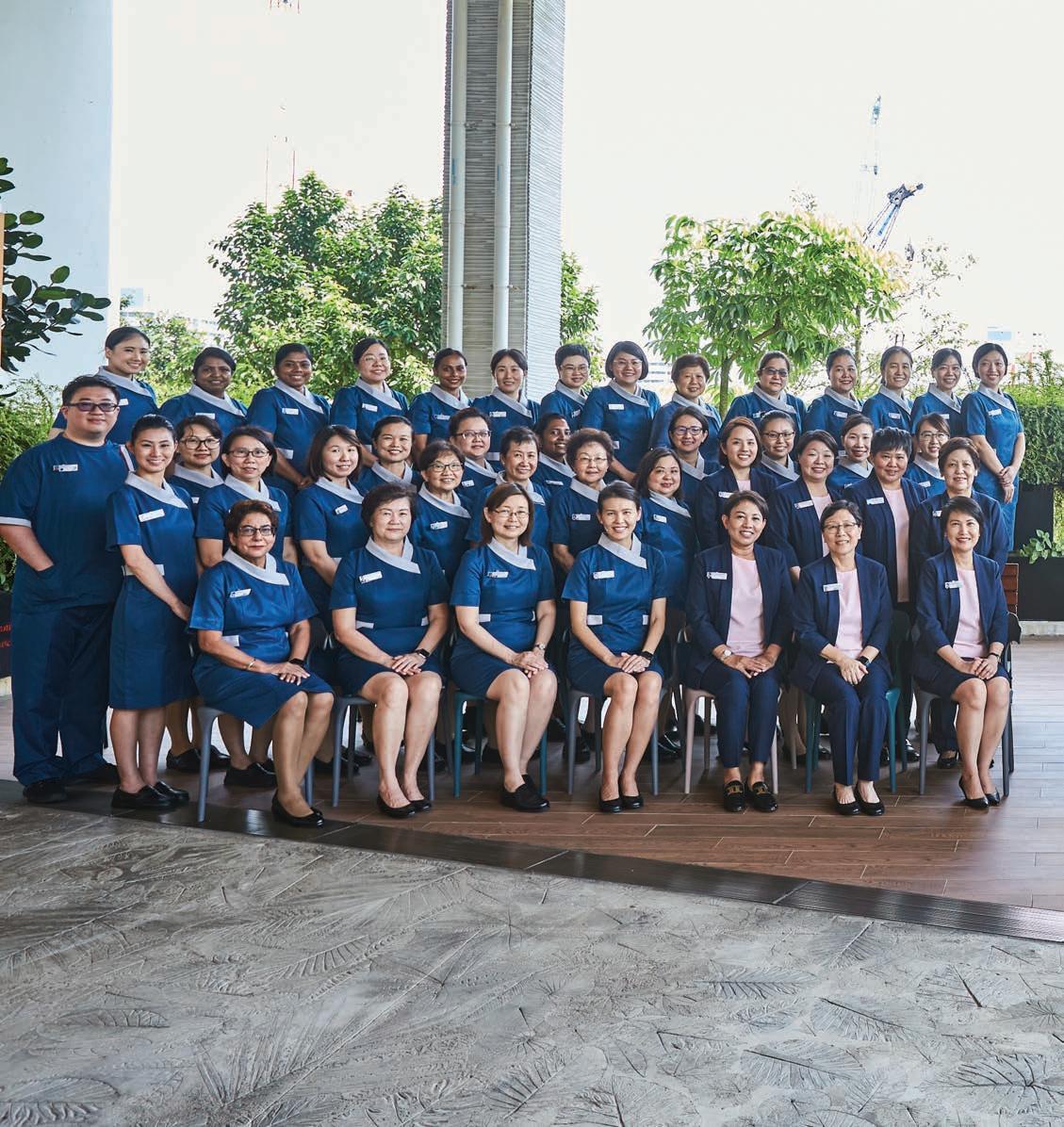

42 |
The landscape of healthcare is always evolving, and it is our responsibility as nurses to adapt and embrace the changing dynamics of our profession. With a bigger focus on preventive health this year, we renew our commitment to not only deliver care to patients, but also to connect with them and build trust. By doing so, we are able
to partner and enable them in their own health decisions and empower them to be advocates to those around them.

This Nurses’ Day, we celebrate the valuable work that nursing is, recognise the sacrifices of our nurses, and affirm their dedication. It is the coming together of individual skill sets, strengths and stories that weave into a strong and beautiful tapestry!
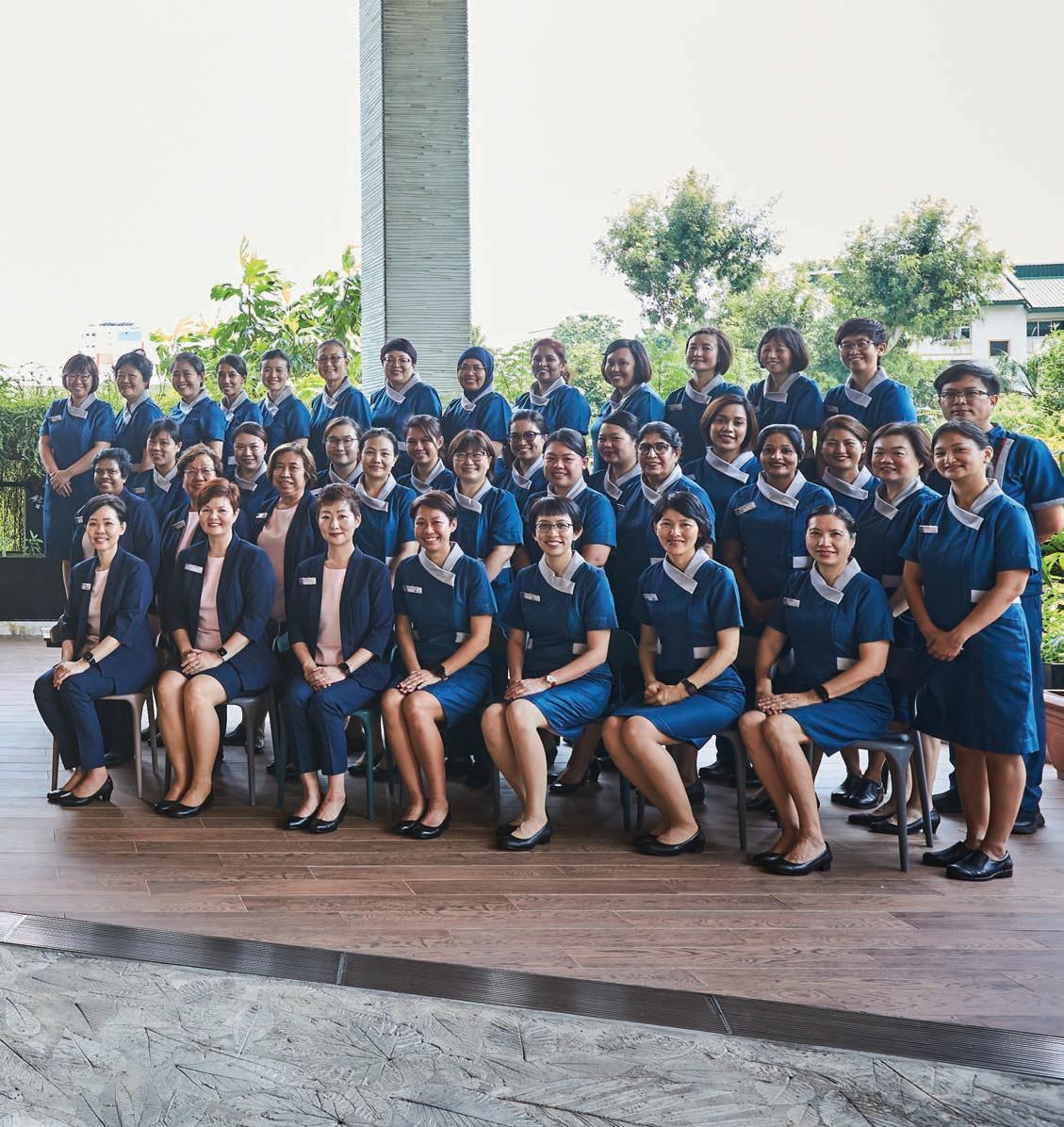
| 43 urses’ Day 2023
Shoes of OUR NURSES STEPPING INTO THe
In the lead-up to Nurses’ Day this year, Yishun Health’s CEO and Heads of Department signed up as Nurse Buddies and carried out daily duties in various care areas of the hospital.
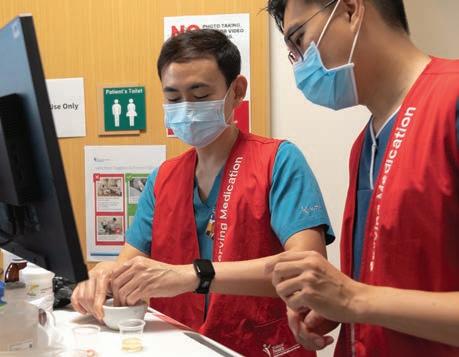

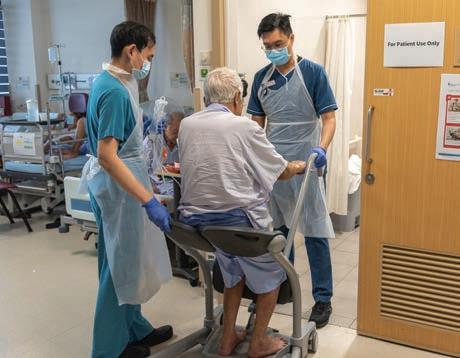
Started last year by Senior Management leaders, the Nurse Buddy initiative was found to be deeply meaningful and enriching, resulting in its continuation this year.
Our leaders immersed themselves in various nursing duties, from attending roll call and serving meals and medication to sponging patients and assisting in wound dressing. This experience gave them an intimate first-hand appreciation of our nurses’ daily work.

44 |
CEO Prof Chua Hong Choon stepping into the frontlines, experiencing the intensity and teamwork of the A&E department
Dr Ng Chong Jin, Head and Senior Consultant, Geriatric Medicine (left), assisting a patient to shower using the sit-to-stand aid equipment, Sara Stedy, which promotes early mobilisation
Dr Ng serving medication with precision and care, ensuring the right medication, right dose and right route of administration for the right patient at the right time!


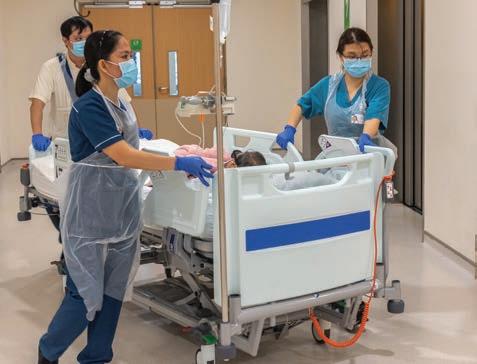
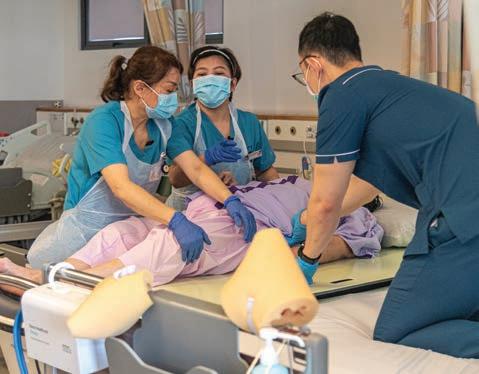

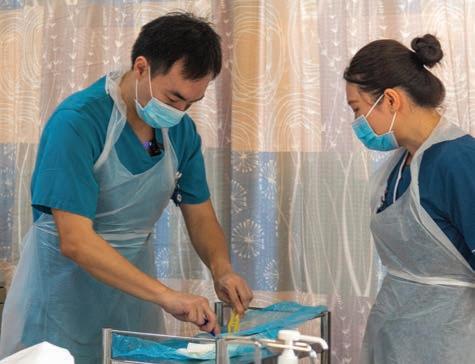
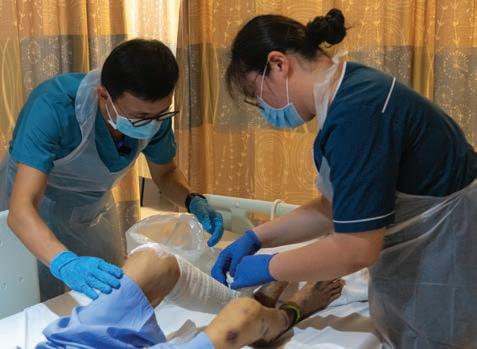
| 45
YCH Deputy Head of Pharmacy Low Suat Fern (right) calmly escorting a patient to a CT scan procedure
urses’ Day 2023
Dr Patrick Lim, Head and Senior Consultant, Cardiology, extending a hand of empathy and a listening ear to comfort an anxious patient
Human Resource Deputy Director Joanne Tan preparing to serve breakfast to patients
All hands on deck! Joanne and the nurses transferring a patient to a trolley bath for showering
Corporate Communications Director Albert Foo learning how to perform wound dressing delicately — one of the most challenging tasks for him!
Dr Jerry Goo, Head and Senior Consultant, General Surgery, stepping in to assist with wound dressing with skilled hands and unwavering focus
merit award

winners
The MOH Nurses’ Merit Award recognises nurses who have performed exceptionally in their duties and made their profession proud. Congratulations to the seven winners from Yishun Health!
The opportunity to be part of a team that saves lives in surgery brings me a profound sense of fulfilment. Though challenging, nursing is rewarding and the privilege of caring for my patients with complex medical situations motivates me to do my best.
BI LULU NURSE MANAGER MAJOR OPERATION THEATRE, KTPH
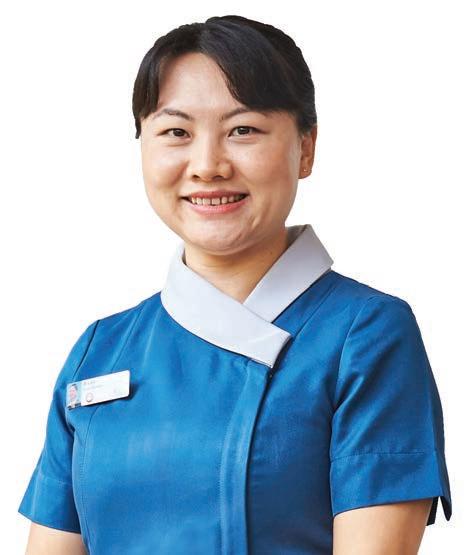
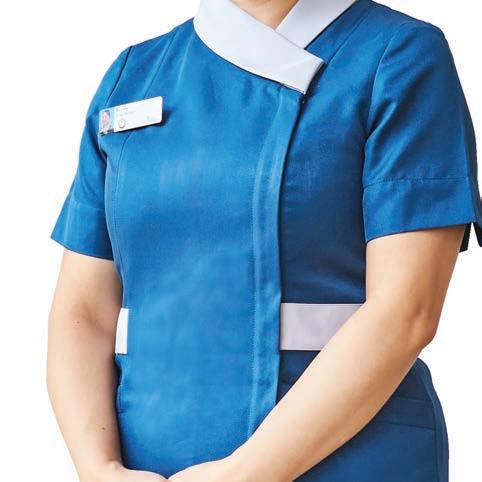
46 |
To be able to care for someone and bring them back to health is a true calling for me. The joy and smiles on my patients’ and their families’ faces make every day worth it. My vision is for all nurses to be professional and empathetic, delivering care with compassion and heart.
 BIMELDEEP KAUR ASSISTANT NURSE CLINICIAN WARD
BIMELDEEP KAUR ASSISTANT NURSE CLINICIAN WARD
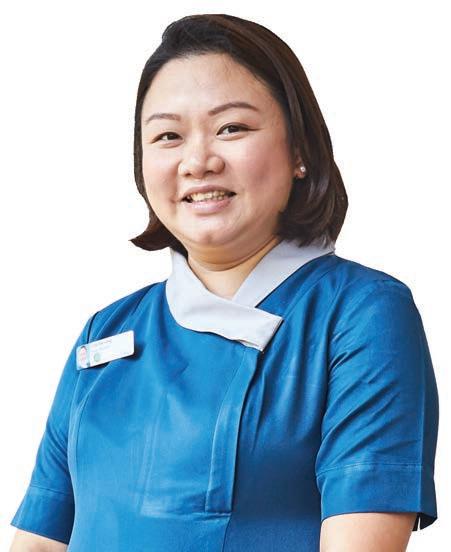

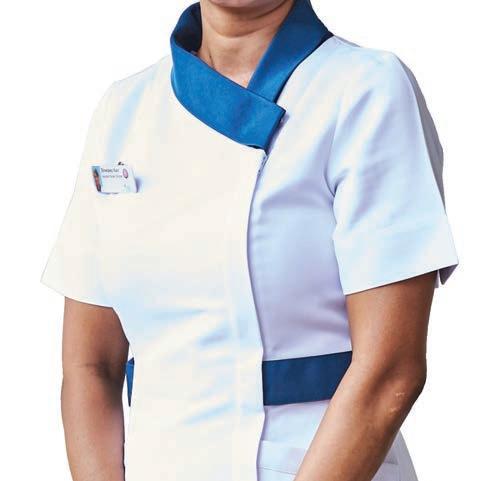
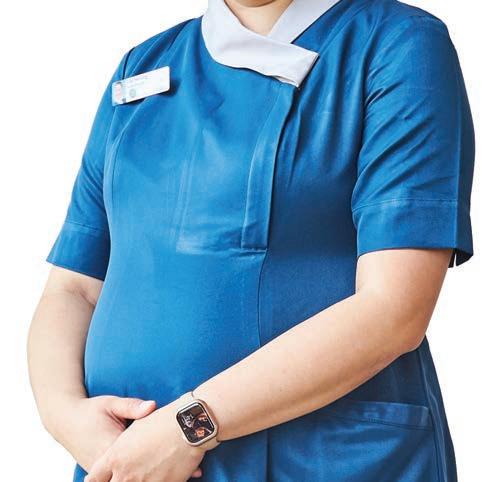
| 47 urses’ Day 2023
I believe that, as nurses, we have the responsibility to provide good care, learn new skills, and adapt to evolving times. I look forward to doing my best everyday as there is always something new in store!
EILEEN LIM NURSE MANAGER WARD A71, KTPH
D98, YCH
Being a nurse allows me to serve the community and it gives me tremendous job satisfaction to see my patients recover! Nursing is fast paced and demanding, but being able to overcome these challenges spurs me on to achieve greater heights.
MANAGER
Nursing gives me the opportunity to make a difference by providing expert care when people are ill. I hope to cultivate a good working environment and culture of continuous learning so we as nurses can aspire to advanced skill sets in emergency care.
JEEMOL KOSHY NURSE MANAGER ACUTE & EMERGENCY CARE CENTRE, KTPH
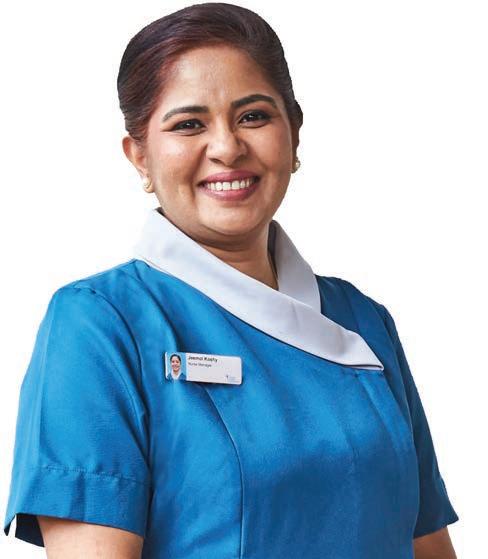


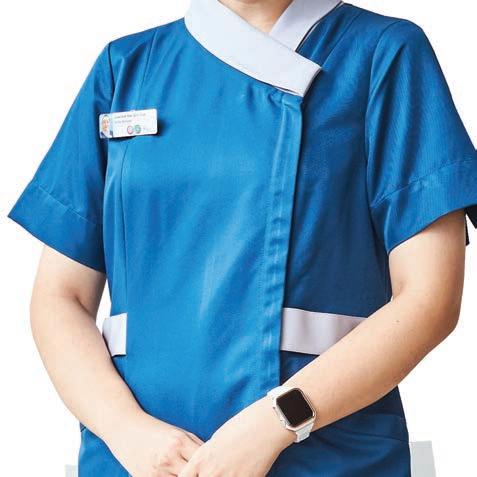

48 |
JEANICE KER NURSE
WARD B65, KTPH
As a nurse, I get to build meaningful relationships with patients and their families. These connections can be deeply rewarding as we become trusted confidants and sources of strength for them. Working with my team to witness our patients’ milestones to recovery is my daily motivation.

Nursing is a fulfilling profession, where we provide holistic, empathetic and compassionate care. With the ever-growing demands of being a nurse, I hope to foster a more competent and capable generation of nurses for the future.
 CHUA CHIN LIAN NURSE CLINICIAN APN & SPECIALTY NURSES, KTPH
CHUA CHIN LIAN NURSE CLINICIAN APN & SPECIALTY NURSES, KTPH


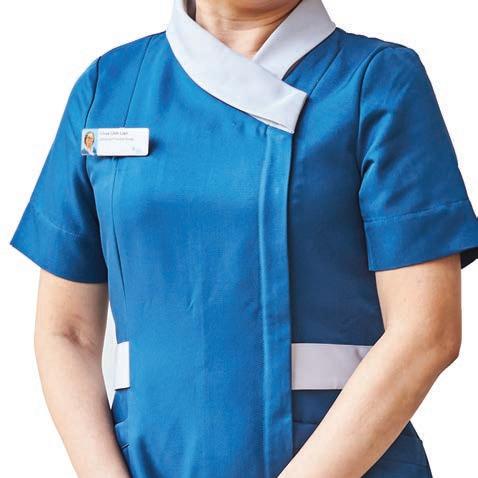
| 49 urses’ Day 2023
GUNASEGARI D/O ARUMUGAM ASSISTANT NURSE CLINICIAN WARD B106, KTPH
Nurses In Conversation


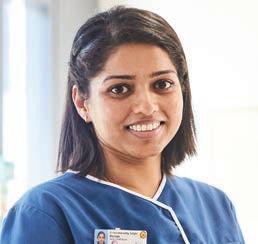

Our nurses go beyond their primary duty of care. Each of them have their own stories, experiences and passions. This year, we invite four groups to have a conversation about digital technology, workplace challenges, finding joy at work and mentoring the next generation.


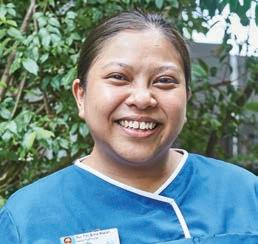
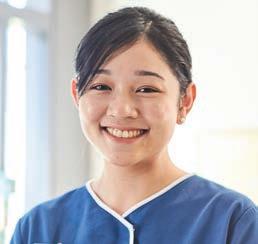



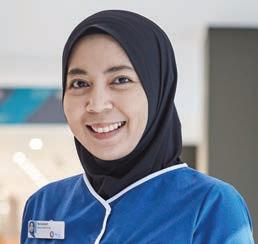
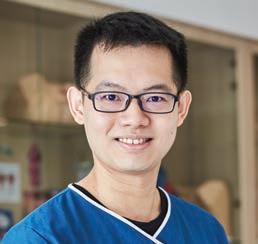
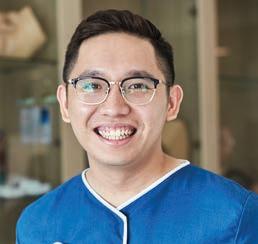

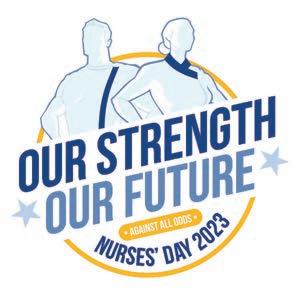
 TAN RODCHELL SAN MIGUEL HUANG YA PING
NUR FITRI BINTE MAZLAN EDDIE HEE
KOH FANG QI
FAHMI IZUDDIN BIN ROSLI FAZIRA BINTE ZULKIFLI KRISESNAVENY SAYER RAMAN
LOH YONG JIAN
LIM WEN TI
MUHAMMAD IRFAN BIN RAZALI
TRACY ANAK JANTOM
PENNY CHEN PINGFEN
NORSALIZAH BINTE SALLEH
SAN SAN WIN THANT
TAN RODCHELL SAN MIGUEL HUANG YA PING
NUR FITRI BINTE MAZLAN EDDIE HEE
KOH FANG QI
FAHMI IZUDDIN BIN ROSLI FAZIRA BINTE ZULKIFLI KRISESNAVENY SAYER RAMAN
LOH YONG JIAN
LIM WEN TI
MUHAMMAD IRFAN BIN RAZALI
TRACY ANAK JANTOM
PENNY CHEN PINGFEN
NORSALIZAH BINTE SALLEH
SAN SAN WIN THANT
EMBRACING TECHNOLOGY & DIGITALISATION

Technology has transformed the nursing profession in profound ways, increasing speed, accuracy and safety. These nurses share their experiences in embracing digitalisation — and how it has enabled them to return to

HOW HAS TECHNOLOGY IMPACTED NURSING?
RODCHELL: I started my career working with paper; case notes had to be dug up, flipped through, then written. Manual documentation took so much time and the risk of mistakes was high. I mean, we all know what handwritten medication prescriptions can be like! (everyone laughs) But with everything now on the NGEMR system, it is so much clearer and safer. Mistakes are automatically flagged so we can take note and do checks.
FITRI: Yes, doing manual paperwork is such a hassle. I’m the type who will rewrite my forms if I make a mistake, so I really appreciate the backspace key! I remember having to fax forms from department to department.
YA PING: With the NGEMR system, information technology has made a huge difference. The old practice of our legacy systems were all using numerous IT programmes so we had to toggle between them to gather all the information for our patients. Now, the NGEMR system incorporates all the data in one setting, and a single log-in will give us a complete history of a patient, from
| 51
the heart of their work: bedside care, patient engagement and offering comfort, compassion and the human touch.
urses’ Day 2023
their medical history and lab results to their medications and other related documents. This can be accessed across clusters and other institutions such as polyclinics. It just makes everything clear and accurate.
EDDIE: Even though I am quite ‘young’ in nursing, I have experienced hybrid methods as a student when we used paper forms as well as digital documentation. I’ve also done telemedicine at THINK Centre and it was an opportunity to use technology to improve patient care. Though nursing is in the very early stages of technology adoption, I think we should explore the potential of Artificial Intelligence (AI) and technology, and how we can harness them to help us in our job, especially in the documentation aspect. When used well, technology can alleviate some of the demands so we can focus on what matters.
WHAT IS YOUR EXPERIENCE IN ADOPTING THESE NEW TECHNOLOGIES?
RODCHELL: The transition from paper to digital was not easy for me! Over the years, I experienced moving from paper to subsequently SCM and NGEMR systems. Every change is a learning curve, but it’s worth it. Like for my work in wound care, we had to write notes before, but now we can simply capture images and enter it directly into the system so everyone can view it and know the status. It really makes for better care.
FITRI: When we adopt a new technology, we must be mindful that some people take a little bit more time, especially if it’s not something they grew up with or are used to. As a trainer, I make sure we cater to the different needs and ensure they have someone to guide them along. The inspiring thing is that, even though it is challenging to grasp, our more senior nurses have an open mindset about it. They understand that change is here and they need to adapt to it. I really admire their willingness to move with the pace.
EDDIE: I think we just have to support each other. In the same way my seniors taught me, I was happy to teach and help my colleagues out when we moved to the NGEMR system, even though I was not officially given any task to do so. I think being one of the younger techsavvy nurses gives me an advantage in this area!
RODCHELL: We do share our own little tips and tricks with each other on how to use the system. We also adapt
along the way, like using smart text to more effectively document and cascade the schematic to everyone.
EVERYTHING
EDDIE: At its core, many things in nursing will not change, even with technology. Our core skills — inserting cannulas and plugs, giving direct bedside care — will always be relevant.
YA PING: Patients are human beings and they often feel stressed about their medical conditions. As nurses, we treat them with compassion; we talk to them and provide them with education, hold their hands, and give them assurance. Technology cannot replace that.
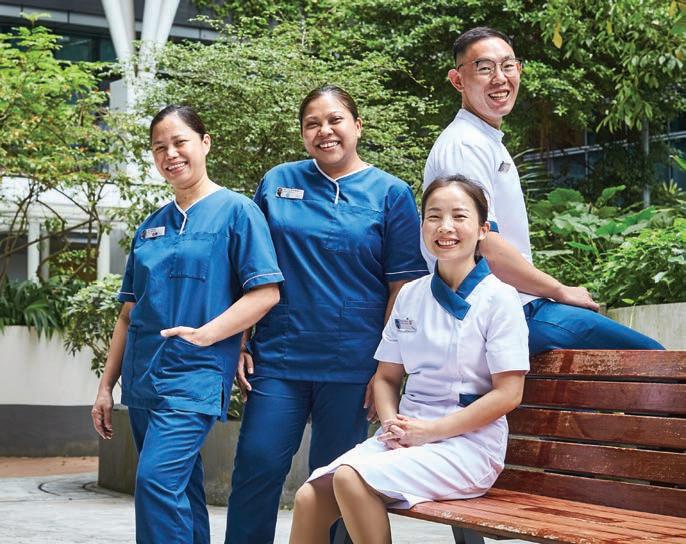
FITRI: That’s right, because the heart of nursing is about the human touch. We should use technology so it allows us to do more bedside care, spend more time with patients, and improve our connections with them. It is the reason I love nursing — I just love talking to patients. Everyone has a story and you can find out so many things if you simply talk and listen to them.
Next Generation Electronic Medical Records (NGEMR):
This advanced integrated medical record system, an initiative of the Ministry of Health, harmonises systems and functions across multiple healthcare institutions, enabling patient care details to be captured cohesively and efficiently. This serves to support the goal of providing seamless care for everyone, wherever they are in the healthcare spectrum. Since 2021, NGEMR has gone ‘live’ progressively across the NHG family.

52 |
IS GOING HIGH-TECH NOW. HOW DO YOU THINK THE CAREGIVING ASPECT OF NURSING WILL BE AFFECTED BY THIS?
What is NGEMR?
IF YOU COULD THINK OF AN INVENTION THAT COULD IMPROVE YOUR WORK, WHAT WOULD IT BE?

Medical technology is so advanced. If I could invent a single sensor that helps to monitor all parameters of my patients and transfer all data to the system immediately without all the cables and wires, that’ll be great! It’ll also make our patients feel more comfortable when we need to move them around.
In YCH, we work with robots known as TEMI. They help nurses with announcements and some translation services but wouldn’t it be amazing if more languages and dialects were included? I am Filipino so I find it challenging to communicate with some of my patients, especially those who are Teochew- or Hokkien-speaking. I look forward to technology raising our levels of care even more!
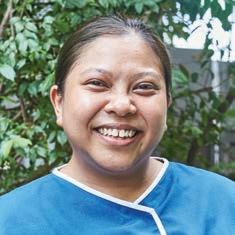
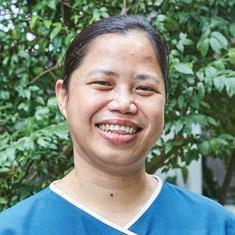
I would like a robot to serve patient meals. It’s not that I don’t enjoy the work, but meal times usually coincide with medication serving, which can also be disrupted if a patient needs toileting or has other requests. Then it’s one thing after another and causes delays and people get hungry; and when they get hungry, they get angry. If restaurants like Haidilao can have robots serving meals, so can we!
NUR FITRI BINTE MAZLAN SENIOR STAFF NURSE
B66
I know it’s already better than paperwork, but typing out our documentation still takes a lot of time! My colleagues and I often have to stay back after work to finish a day’s worth of case notes. If only there is some way technology could help us with our administrative work — perhaps like AI — so we can really just tend to patients and give them unhurried quality care!
EDDIE HEE STAFF NURSE WARD D98 YCH

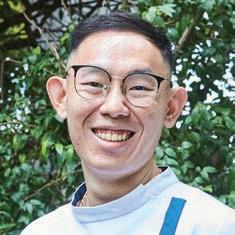
| 53
WARD
KTPH
HUANG YA PING SENIOR STAFF NURSE ENDOSCOPY CENTRE KTPH
TAN RODCHELL SAN MIGUEL SENIOR STAFF NURSE WARD D58 YCH
urses’ Day 2023
A Call for Empathy and Partnership Workplace Challenges:
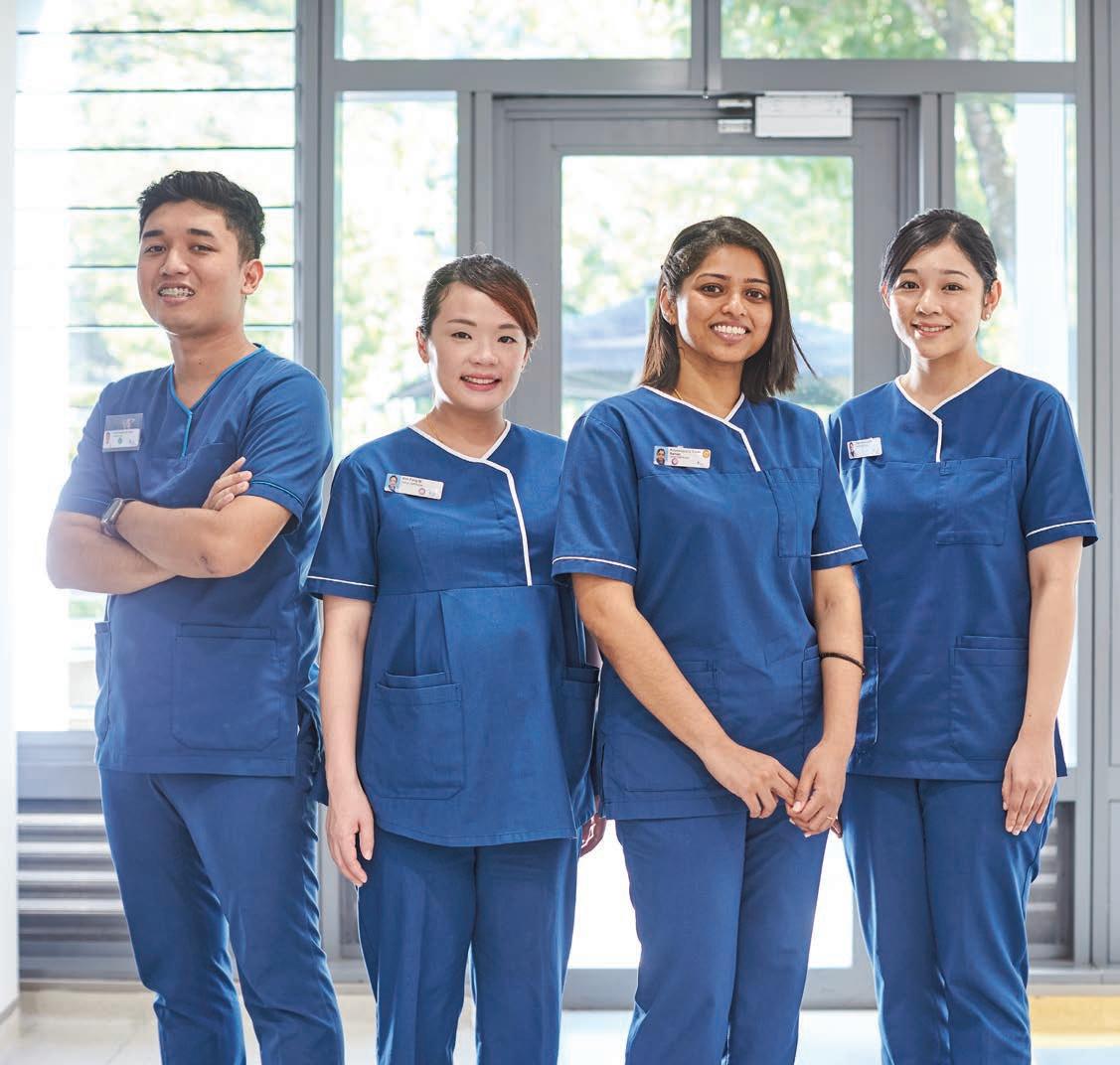

It is no surprise that healthcare work is demanding — both physically and mentally. And as healthcare facilities cope with intense demand amid rising expectations, some nurses are facing verbal and even physical abuse in their workplaces. Giving an honest insight into their struggles, these nurses share the highs and lows of striving to do their best, and how greater understanding, empathy and partnership can enable all patients to receive the best care.
WHAT ARE SOME OF THE CHALLENGES IN YOUR WORK?


KRIS: We have a high patient load and sometimes other patients may have more critical needs. I’ve been questioned before about why I was “always on the computer”. But charting and documentation is a big part of our job. It’s important to ensure patient safety and it actually helps the whole team make sound medical decisions. And we really hope for more understanding in this area.
FAZIRA: Being nurses, we are here to help patients and we do our best even with a bed crunch and manpower challenges. So it can be a struggle. Our geriatric patients require a lot of assistance, so it takes more time to care for them. Between changing diapers, feeding patients and attending to acute episodes, even answering a call bell can take time.
FANG QI: I realise we are all working in geriatric care wards, so maybe our problems are similar. For me as an acting nurse manager, I handle a lot of complaints (everyone laughs). Sometimes we experience violence, too. Fahmi, my colleague, was punched by one of our patient’s son. The man was unhappy with one of our nurses and had many demands. Fahmi stepped in to protect his colleague and the son became aggressive, turned on Fahmi, and punched him.
FAHMI: I was very upset. The son swore vulgarities at me, cursed my mother, and even wrote a complaint letter to the Ministry of Health (MOH) to say I punched him first. It’s very saddening. My parents were very worried about my safety. You never really expect these things to happen.
FAZIRA: I work in a dementia ward, where we take a no-restraints approach. We believe this is important for the dignity of patients, but there are risks, too. Our patients have cognitive and behavioural issues, and can sometimes become violent. Their condition manifests in hitting, spitting and scratching. Most of the time, we are able to anticipate their hits, but it’s not always possible to avoid because they can be unpredictable.
KRIS: Actually, we can understand why patients are uncooperative or frustrated — they are unwell and in discomfort. But sometimes it is the patients’ family who can be more challenging to handle — and this is something that’s harder to understand. I’m from a palliative care ward, and I empathise because their loved one is not doing well, but the families’ expectations can be quite demanding. Sometimes they can’t wait at all, or want us to do everything all at once.
HOW DO YOU HOPE SUCH ISSUES ARE ADDRESSED?
FANG QI: Physical violence leaves a lasting negative impact on all nurses. I actively advocate for my colleagues and I’m glad that MOH and Yishun Health take a zero-tolerance stance towards workplace harassment, but more can still be done.
FAZIRA: I agree that we can do more. Apart from posters in the clinics and wards, we need more awareness and campaigns in the public.
FANG QI: I would like the public to understand that nurses are humans, too. When we are portrayed by the media to be ‘superheroes’, public expectations
| 55
urses’ Day 2023
become unrealistically high. We love our patients and do our best for them, but often it’s a big mental strain for nurses as we have to keep up with these expectations.
KRIS: We definitely hold ourselves to high standards but we are human, too. We invest effort, emotion and care into what we do, even when it hurts us to. Dealing with patients at the end of life, I feel sad for every passing. Some people do not realise what they say and do is hurtful and abusive, and their words, tone and actions affect us deeply.
FAHMI: In my work, I care for every patient like my own grandparent or relative. And I hope that their family members realise that we are doing our best. And it will be even better if they can also step in to help!

FAZIRA: Yes, I think it would help if families could be more active in the care of their loved ones in the ward. This builds more empathy and mutual understanding.
KRIS: As nurses we take responsibility for our patients, but their family members’ contribution in basic care like feeding or cleaning will actually help us focus better on the clinical side. This will likely lead to a better recovery process because patients tend to do better under the care of their own loved ones.
WHAT KEEPS YOU GOING DESPITE THESE CHALLENGES?
FANG QI: Of course, the challenging patients and families are usually the loudest and impact us the most. But I think, overall, the majority of patients and families we meet are very nice and their appreciation is very motivating.

FAHMI: Whenever I see patients get better, happier and healthier and can go home, it’s a good feeling.
FAZIRA: We all have bad days, but we also have good ones and it’s nice to share all these with my team. The support of my team is very important.
KRIS: On those bad days, it helps to vent and let it out. When we share with our colleagues, we feel less alone.

FAHMI: It really helped to talk to my supervisor. I was also referred to PALS (see sidebar), where the clinical psychologist gave me some advice on dealing with the punch incident. Talking to my dad was also helpful, because — although he was worried — he helped me to remember that my job is meaningful.
KRIS: It is meaningful. I think, at the end of the day, it’s always the small things and the sincere thanks that keep us going. Sometimes, we get snacks or food as gestures of appreciation. But what I treasure most are those heartfelt notes that my patients or their family members write. These touch my heart and make me feel seen and valued.
56 |
Physical violence leaves a lasting negative impact on all nurses. I actively advocate for my colleagues and I’m glad that MOH and Yishun Health take a zero-tolerance stance towards workplace harassment, but more can still be done.
KOH FANG QI SENIOR STAFF NURSE WARD B55
KTPH
In my work, I care for every patient like my own grandparent or relative. And I hope that their family members realise that we are doing our best. And it will be even better if they can also step in to help!
FAHMI IZUDDIN BIN ROSLI ENROLLED NURSE WARD B55 KTPH
KTPH
Do not abuse our healthcare workers!
In 2022, MOH initiated a Tripartite Workgroup for the Prevention of Abuse and Harassment of Healthcare Workers. It conducted an extensive engagement with more than 3,000 healthcare workers, and more than 1,500 members of the public. It found that:
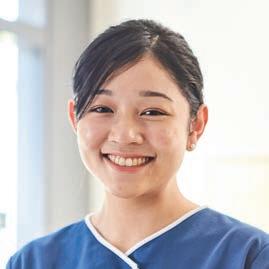
• More than two in three healthcare workers had witnessed or personally experienced abuse or harassment in the past year

• Half of them, or a third of all healthcare workers, witnessed or experienced abuse or harassment at least once a week
• Frontline healthcare workers such as pharmacists, patient service associates, and nurses are more likely to experience abuse and harassment
• The most common forms of abuse and harassment are shouting, demeaning comments, and threats by patients and/or caregivers to file complaints or take legal action
• Healthcare workers experiencing abuse and harassment sometimes rationalise these as being part of their job. They often empathise with patients’ circumstances and do not take action, so abuse and harassment are often under-reported
Peers Around Lending Support (PALS)

This
was
in
As of 2023, the Ministry is working with public healthcare clusters to develop the details of a standardised zero-tolerance policy. Healthcare workers will also continue to be protected under the Penal Code and the Protection from Harassment Act.
| 57
When we share with our colleagues, we feel less alone. But what I treasure most are those heartfelt notes that my patients or their family members write. These touch my heart and make me feel seen and valued.
KRISESNAVENY (KRIS)
SAYER RAMAN
SENIOR STAFF NURSE WARD D108 YCH
We all have bad days, but we also have good ones and it’s nice to share all these with my team. The support of my team is very important.
FAZIRA BINTE ZULKIFLI
SENIOR STAFF NURSE
WARD D87
urses’ Day 2023
programme
launched
2008. Run by clinical psychologists, PALS provides ongoing support and counselling for staff on platforms such as group meetings, a helpline, email, and outreach.
IGNITING JOY IN LIFE AND WORK

WHAT ARE YOUR HOBBIES AND PERSONAL INTERESTS OUTSIDE OF WORK?
PENNY: I’m an active grassroots leader with my community centre. We encounter a lot of people in need and I really just want to see how I can help. As an immigrant to Singapore, it is my way of giving back; I feel very grateful for my life here and the way many people have made me feel at home.
TRACY: I’m on TikTok, where I share my life and stories about nursing. It started when I first came to Singapore from Malaysia to study and work. I have no family here and didn’t know many people at that time. Social media was a way for me to express myself. I didn’t expect that people would connect with my posts, but it was
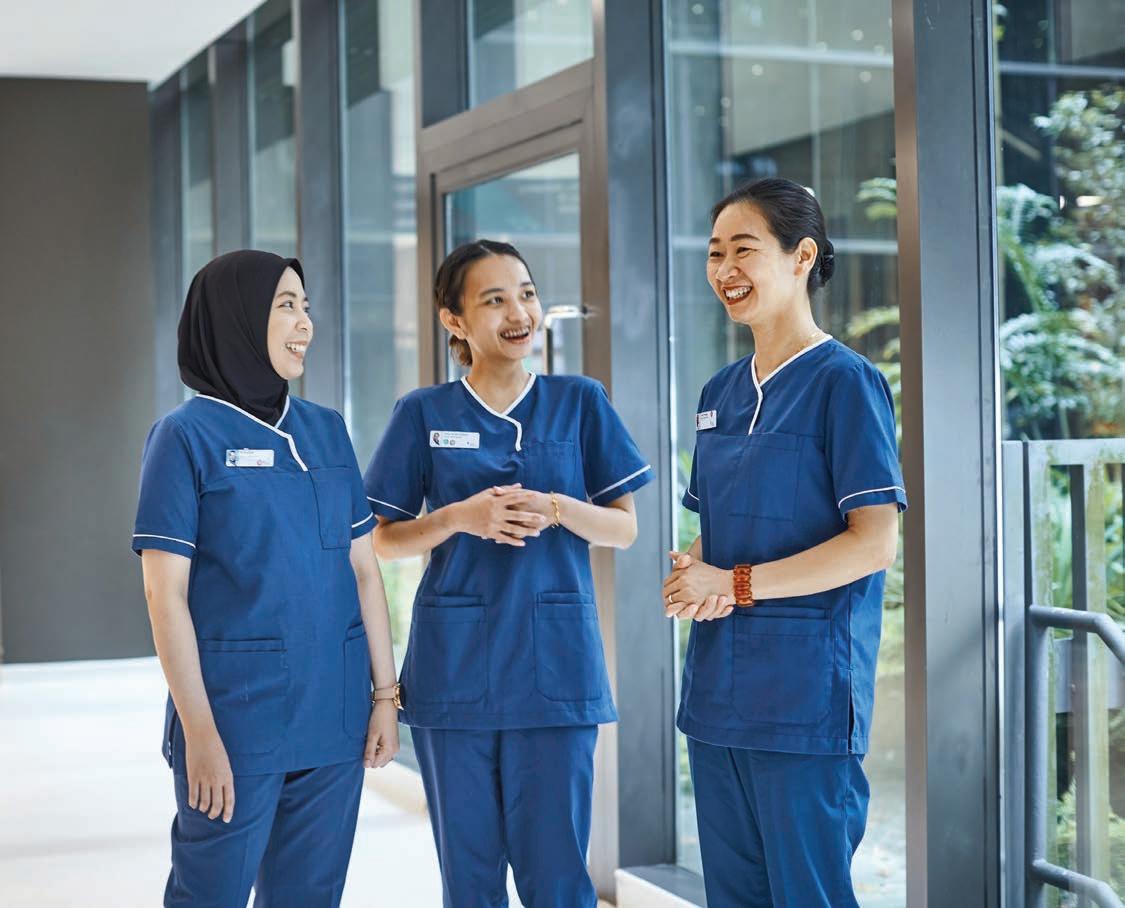
58 |
There is a reason that we often view nursing as a calling — it takes a certain aptitude and attitude to not just survive but thrive despite the demanding nature of the work. For some nurses, keeping the inner fire alight means finding outlets in their personal lives that energise their bodies, restore their spirits, and motivate them to give their best each day.
very validating when they acknowledged my struggles and shared words of comfort. It made me feel less alone, especially during the pandemic, when I was away from my family and work was so challenging. The editing and storytelling on TikTok is also a creative outlet for me.
SALIZAH: My passion outside of work is my family. After a day at work, I don’t always have a lot of time to spend with my children (they are eight and five), but we make up for it over the weekend. I always make the effort to look for places we can go to and activities to do. Sometimes, we visit my parents or they come over to spend time with us. Family time keeps me sane. Of course, juggling all these is tiring, but it’s also so rewarding. I look at their happy faces and think about the memories we make and the tiredness is totally worth it.
YOU HAVE SUCH DIFFERENT AND DIVERSE PERSONAL INTERESTS AND LIVES. IS THIS ALSO REFLECTED IN YOUR NURSING ROLE?
SALIZAH: Nursing is quite diverse, too. Over my career, I’ve moved from the Major Operating Theatre to Day Surgery, and was also deployed to A&E. I went for cross training at the Anaesthesia Clinic, too, so I get to see many patients in different settings.
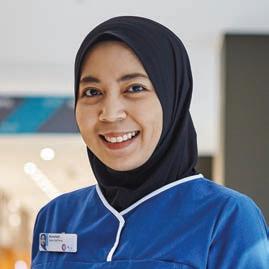
TRACY: Same for me! I was working in the Intensive Care Unit back in Kuala Lumpur, and now I’m situated in the acute setting, from Cardiology to Surgical and MedicalSurgical wards. Now I am in one of the last remaining COVID-19 wards and also straddling the Medical-Surgical ward — it’s quite the balancing act. All the settings are very different, but each with its own challenges and rewards.
SALIZAH: Yeah, it’s a very different experience. At the A&E, we see how difficult it can be with the hospital’s bed crunch and waiting times. I put myself in their shoes and try to reassure my patients and update them regularly. I do the


same at the AdMC Day Surgery Centre and try my best to help them feel comfortable and calm during their time here.
PENNY: For me, I’ve worked in the community for a long time, in many areas of community nursing, such as day care and rehabilitation centres, to nursing homes and home care. But YCH is my first public hospital setting! I really enjoy community nursing because of the people I get to meet and the time I get to spend with them.
NURSING IS SO MUCH ABOUT CONNECTING WITH PEOPLE. HOW DO YOU DO THIS IN YOUR WORK?
TRACY: I really enjoy talking to patients — it’s my favourite thing to do. I like finding out about their lives and who they are outside the hospital.
SALIZAH: Yes, talking to patients, listening to them to find out what they are worried about — it helps them be more calm and have a better experience at the hospital. So many times when they come to us for day surgery, their blood pressure is already high because they are anxious (everyone murmurs in agreement). So we do what we can to explain the surgery procedure, ease their mind, let them maybe chit-chat with each other, and it helps! But one of the hardest things we also do is to break bad news. When the doctor has to call the family to give a cancer diagnosis, it is quite sad and we are extra sensitive in these instances.
PENNY: Life is not easy; we see a lot of suffering and pain. But with nursing, we are in a position to offer our assistance to others and we can actually make a difference. It makes me feel grateful to be able to do this.
HOW DO YOU COPE WITH SOME PEOPLE COMPLAINING LOUDLY IN THE WARDS AND CALLING FOR “MISSY”?
TRACY: I don’t mind if patients are a little noisy. It’s not okay if they stop making noise (everyone laughs). It’s
| 59 urses’ Day 2023
Family time keeps me sane. Of course, juggling all these is tiring, but it’s also so rewarding. I look at their happy faces and think about the memories we make and the tiredness is totally worth it.
NORSALIZAH BINTE SALLEH SENIOR STAFF NURSE DAY SURGERY CENTRE ADMC
actually more reassuring if they are ‘active’ — then we can type “alert and orientated” in our reports!
PENNY: We often hear sad stories from people and sometimes we feel quite down on their behalf. But I think as long as people can still reach out and seek help, there is hope because we can share resources and advice to help them feel better.

TRACY: For me, I think patients just like to talk to us and for us to interact with them. The ones who seem grumpy are actually that way because they are unsure and don’t know what is going on.
PENNY: Yes, I think sharing is big part of nursing. In Chinese, we say fen xiang (分享), which means share experiences, and fen dan (分担), which means share responsibility. We also share joy, share resources, and share stories with each other.
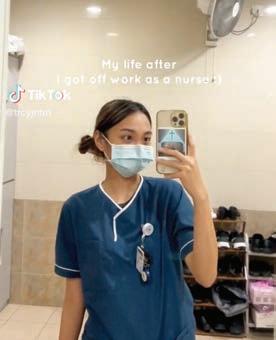

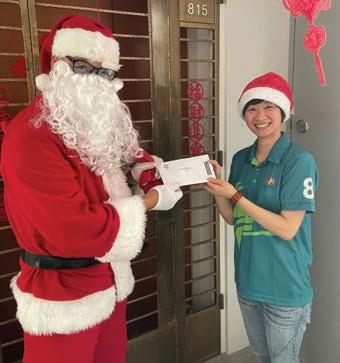
SO WHAT DO YOU SHARE FROM YOUR PERSONAL LIVES IN YOUR WORK?
TRACY: With TikTok, I learn how to edit my videos in creative ways, and I think I bring that into work by expressing myself in the same ways to make the
workplace fun and warm! Because of this, my team always assigns me to be part of campus-wide festivals. And I love organising parties and birthday celebrations for my colleagues.
SALIZAH: Me, too! I am also on the Welfare Committee in my team! I love researching and planning for birthday celebrations or year-end parties, like buying the birthday cake, food and other decorations or party essentials. It’s so nice to make people happy and surprise them.
PENNY: With my work, family and volunteering commitments, I have learnt to be good at balancing all these. And this skill of time management and planning is very important in nursing because we have so many things to do as well! Like Salizah, my family is my biggest support, and I make sure to make time for them!

SALIZAH: Yeah, my family is my biggest motivation. Sometimes, even though I am running on five-hours of sleep, I still have the energy to keep going. It’s a mother’s instinct. And this nurturing instinct is such a big part of nursing — I’m glad that such a big part of me can be a part of nursing.
YCH
60 |
We often hear sad stories from people and sometimes we feel quite down on their behalf. But I think as long as people can still reach out and seek help, there is hope because we can share resources and advice to help them feel better.
PENNY CHEN PING FEN SENIOR STAFF NURSE WARD D58
With TikTok, I learn how to edit my videos in creative ways, and I think I bring that into work by expressing myself in the same ways to make the workplace fun and warm!
TRACY ANAK JANTOM SENIOR STAFF NURSE WARD A72 KTPH
BY TEACHING, WE LEARN; BY LEARNING, WE TEACH

The days of teaching nursing through blind obedience and strict dogma are far in the past. The art of nurse training today is a reflective, hands-on and structured approach that cultivates self-awareness, focuses on experiential learning, and drives skill-based competencies. As these nurses discuss, the act of teaching is also deeply intertwined with that of learning, and that mutual instruction and peer sharing help them achieve higher levels of knowledge and skill.
CONTINUOUS LEARNING IS SUCH A BIG ASPECT OF NURSING. WHAT IS YOUR OWN EXPERIENCE IN LEARNING AND/ OR TEACHING?
WEN TI: I have been a nurse for 18 years, and teaching has been part and parcel of my my work. I was a Clinical Instructor in Malaysia before joining Yishun Health in 2015. Since then, I’ve been involved in preceptorship activities, where I assist new nurses to adapt and carry out their roles and responsibilities independently in a safe manner. Recently, I took on the Clinical Instructor role again, where I train nursing students and new nurses.
What I realise and like about how we train here is the comprehensive structure — there is a clear path, and we can prepare new nurses better for the workplace.
YONG JIAN: As a younger nurse, I find this structure helpful. I’m now a Post-Anaesthesia Care Unit nurse at the Major Operating Theatre. When I first joined, I had to complete a set of general nursing competencies. As I moved between disciplines, I know I will learn a different set of competencies. It is very clear to me what is expected. By the end of my rotation, it felt good to tick off each one. But so far, I haven’t had much experience on the teaching side yet. I have had one preceptee, and all

| 61
urses’ Day 2023
other times I do routine precepting of junior staff.
SAN SAN: For me, as a preceptee (learner), training was a smooth process, and I always had someone to jaga (look out for) me. As a preceptor, I do my best in providing similar or even better guidance to my preceptee. We try to arrange the roster such that those under me are on the same shift as me as much as possible. This facilitates the provision of positive and constructive feedback between us, and also enables us to cultivate the mentor-mentee relationship.

IRFAN: As a preceptor, I’m on my third batch of students now. What I see after finishing my Specialist Diploma and looking back on my own training is that we are enriching the learning experience for nurses. It’s moving from ‘you just need to do it’ (prescriptive) to ‘why you need to do it’, where we explain the motivations.
WHAT IS YOUR OWN TEACHING AND/ OR LEARNING STYLE?
YONG JIAN: I am actually more of a rote learner. I write a lot of notes; I think I have 50-over pages where I write down all the steps of the skills (laughs).
SAN SAN: I’m very hands-on when it comes to learning. No matter how many times you explain the theory to me, my brain cannot absorb it until I do it myself. But when I teach, I adjust my methods to my preceptee’s learning style.
WEN TI: There are many teaching methodologies that
we could use during the mentoring/coaching process, including micro teaching, audio visual, bedside teaching as well as experiential learning. We personalise our teaching methods based on situational and individual needs of the learners. I personally feel hands-on teaching at bedside is the best approaching in most situations, since nursing requires us to practise our skills. IRFAN: I just did this with my students at a resuscitation simulation. This kind of teaching is a way to brush up on practical skills. We also use a lot of reflection and debriefing approaches too.
WEN TI: We call it reflective learning when we look back and think about what we do and why. As a student, we may not understand why this is important, but as we progress in our career and develop some level of understanding, we start to see how it helps with our development.
YONG JIAN: Yes, I remember in nursing school we had to do a lot of reflection and we’re always writing notes. I find it useful to express my thoughts and internalisation.
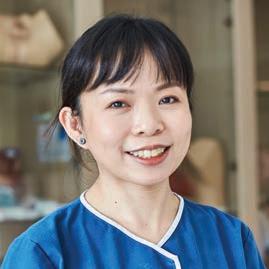
WHAT IS A TEACHING OR LEARNING EXPERIENCE THAT IS MEMORABLE TO YOU AND WHY?
SAN SAN: I learnt from my supervisor that a good teacher is not one who is only easy-going all the time. For example, I admire her for how she teaches; even when she’s firm, I understand that she isn’t ‘scolding’ me, but wants to help me achieve my best. She is strict but constructive, and has my interest at heart. This is the kind of teacher I want to be one day. As a teacher or

62 |
We try to arrange the roster such that those under me are on the same shift as me as much as possible. This facilitates the provision of positive and constructive feedback between us, and also enables us to cultivate the mentor-mentee relationship.
SAN SAN WIN THANT SENIOR STAFF NURSE WARD D107 YCH
We personalise our teaching methods based on situational and individual needs of the learners. I personally feel hands-on teaching at bedside is the best approaching in most situations, since nursing requires us to practise our skills.
LIM WEN TI
SENIOR STAFF NURSE WARD D58 KTPH
student, I think being able to say “I don’t know, but let’s find out together” is so important.
IRFAN: I had a mentor who was known to be quite critical. She would point out what I did wrong, but never step in to help. At the time, I found it quite frustrating. But in the end, I learnt the most from her. Because she never spoon-fed me; I had to do it myself and, as a result, I learnt so much and was able to improve.
WEN TI: During my infancy days in nursing, I was taught by ’scolding’. Today, it is very different. I was also not a ‘good’ student; my grades were not great. So, as a teacher now, I try to remember my past experiences to improve the way I teach. But it’s a balance. We cannot be too ‘soft’ also. Nursing is not easy, so we must try to prepare students for the reality of the workplace.


WHAT MINDSET DO YOU THINK NURSES SHOULD ADOPT WHEN IT COMES TO TEACHING, LEARNING, AND THE IDEA OF LIFELONG LEARNING?
WEN TI: We need to remember that teaching is part and parcel of our responsibility at work. This is essential in ensuring our patients receive quality care that is good enough for our own mothers. We teach all the time: to each other, patients, family members, and caregivers. For me, even though I have been doing a lot of work as a Clinical Instructor in my career, my first love is
still patient education. When we can educate our patients and see the idea ‘click’ in their heads, the change is immediate.
IRFAN: Seeing this is so satisfying. My very first group of students were people doing a mid-career switch to nursing; they had no background in healthcare at all. Over the one-week course, I saw them progress so much and gain confidence, and it was very rewarding for me at the end. It shows how everyone can pick up something new as long as they put their heart into it.
YONG JIAN: Like San San said, whether one is a teacher or a student, I think having open communication and a humble attitude is key.
WEN TI: Importantly, though we rely on textbook and theories first, we also cannot be too fixated. We have to use our instincts and experiences to tailor our teachings to enhance the learning experience. Regardless of the literacy levels of those we teach (students, nurses, patients and their families and caregivers), we need to engage them in ways that work for them — be it at a slower pace, in their own language, or using a different approach.
What is precepting?
Precepting is a critical part of nursing training. It is where an experienced nurse is paired with a new nurse or nursing student for a specific duration, during which the former supports, educates and aids the preceptee during their clinical orientation. The preceptor provides supervision for clinical practice and facilitates the application of theory to practice.

| 63 urses’ Day 2023
What I see after finishing my Specialist Diploma and looking back on my own training is that we are enriching the learning experience for nurses. It’s moving from ‘you just need to do it’ (prescriptive) to ‘why you need to do it’, where we explain the motivations.
MUHAMMAD IRFAN BIN RAZALI SENIOR STAFF NURSE ACUTE & EMERGENCY CARE KTPH
When I first joined, I had to complete a set of general nursing competencies. It is very clear to me what is expected. By the end of my rotation, it felt good to tick off each one.
LOH YONG JIAN SENIOR STAFF NURSE MAJOR OPERATING THEATRE KTPH
A Rewarding & Dynamic Career
Choose to make a difference in the lives of others with this profession that offers a variety of career paths and opportunities for professional growth.
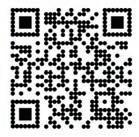
Find out more about the profession from our nurses Read their stories inside! Nursing Management Nursing Administration Trainee Nurse Assistant / Deputy Directors, Nursing Director, Nursing Chief Nurse Staff Nurse Senior Staff Nurse Assistant Nurse Clinician Enrolled Nurse Senior Enrolled Nurse Principal Enrolled Nurse Nurse Manager Senior Nurse Manager Nursing Clinical Nursing Nurse Clinician / Advanced Practice Nurse Senior Nurse Clinician / Advanced Practice Nurse Nursing Education / Research Nurse Educator Senior Nurse Educator
Scan this QR code for career opportunities at Yishun Health!































































































 DR NG CHONG JIN CHAIRMAN, NURSES’ DAY ORGANISING COMMITTEE
DR NG CHONG JIN CHAIRMAN, NURSES’ DAY ORGANISING COMMITTEE






 PAMELA FOONG NURSE MANAGER WARD D67 YCH
PAMELA FOONG NURSE MANAGER WARD D67 YCH






















 CHUA CHIN LIAN NURSE CLINICIAN APN & SPECIALTY NURSES, KTPH
CHUA CHIN LIAN NURSE CLINICIAN APN & SPECIALTY NURSES, KTPH











































